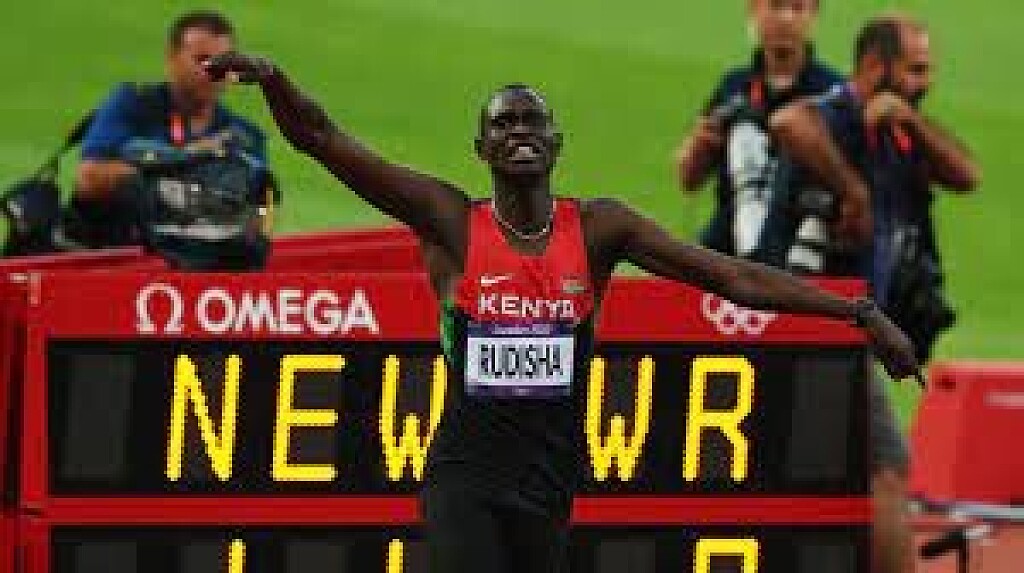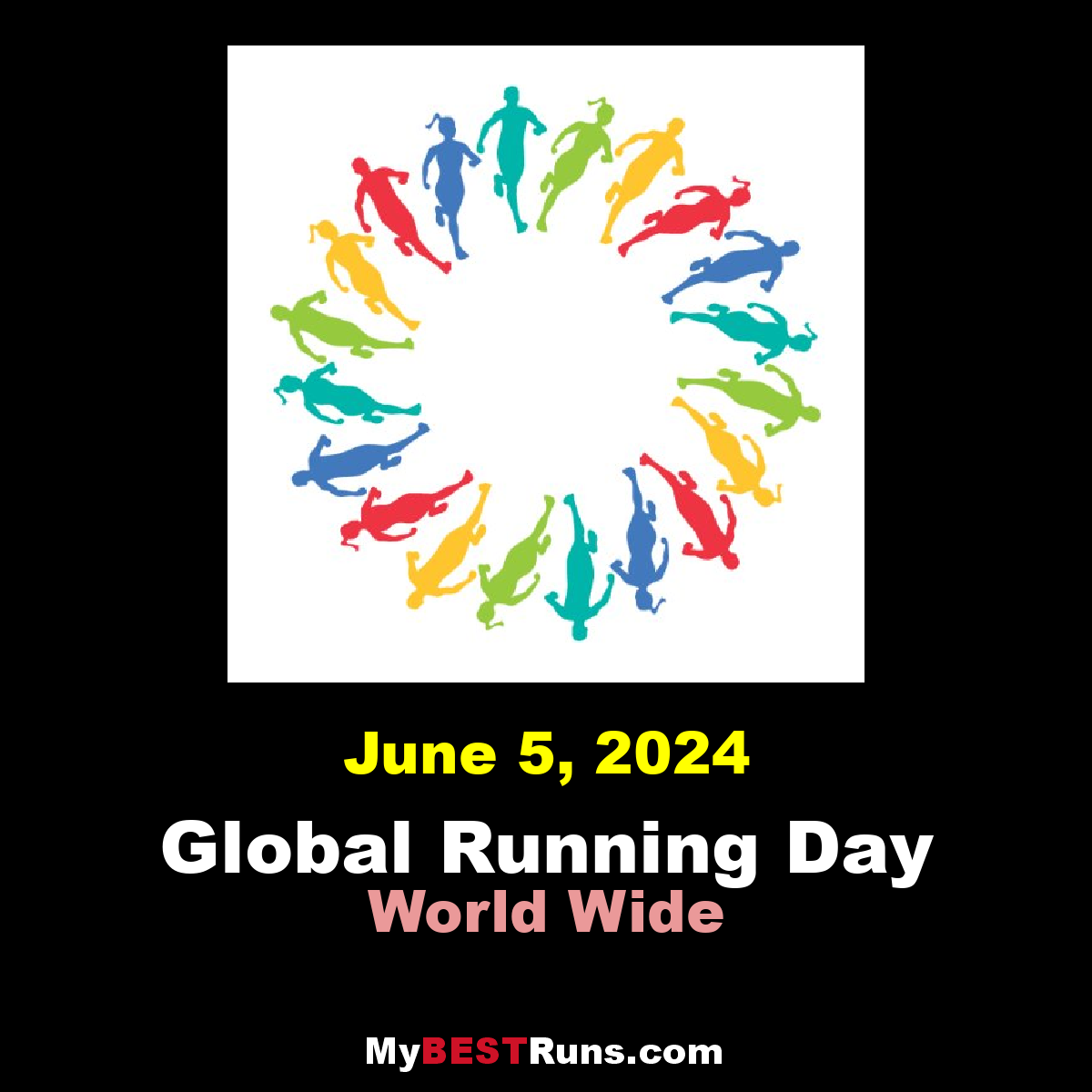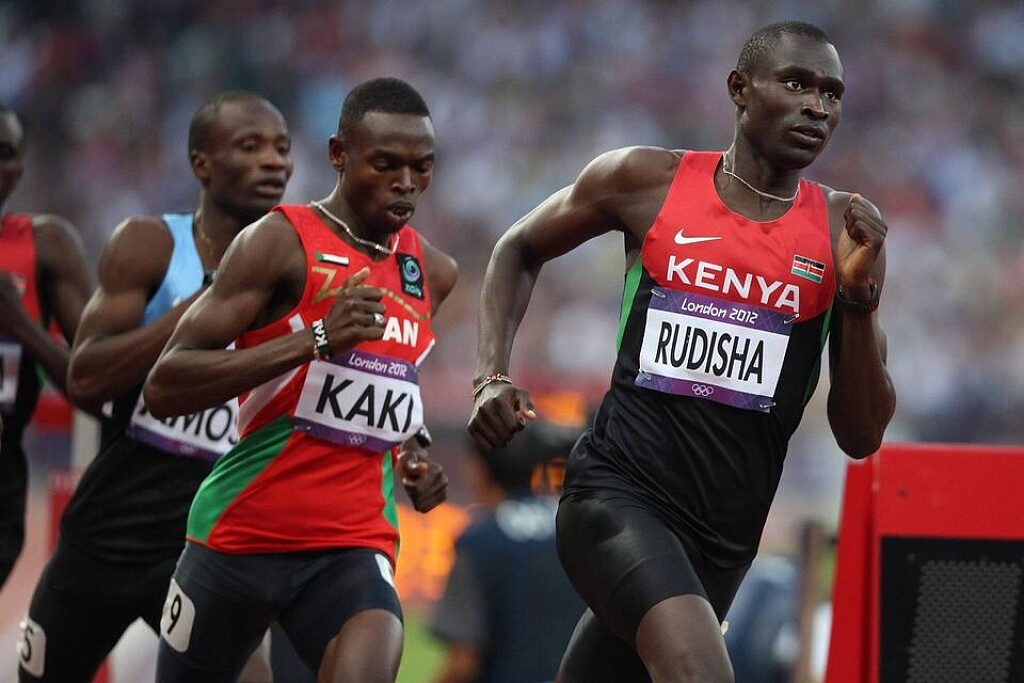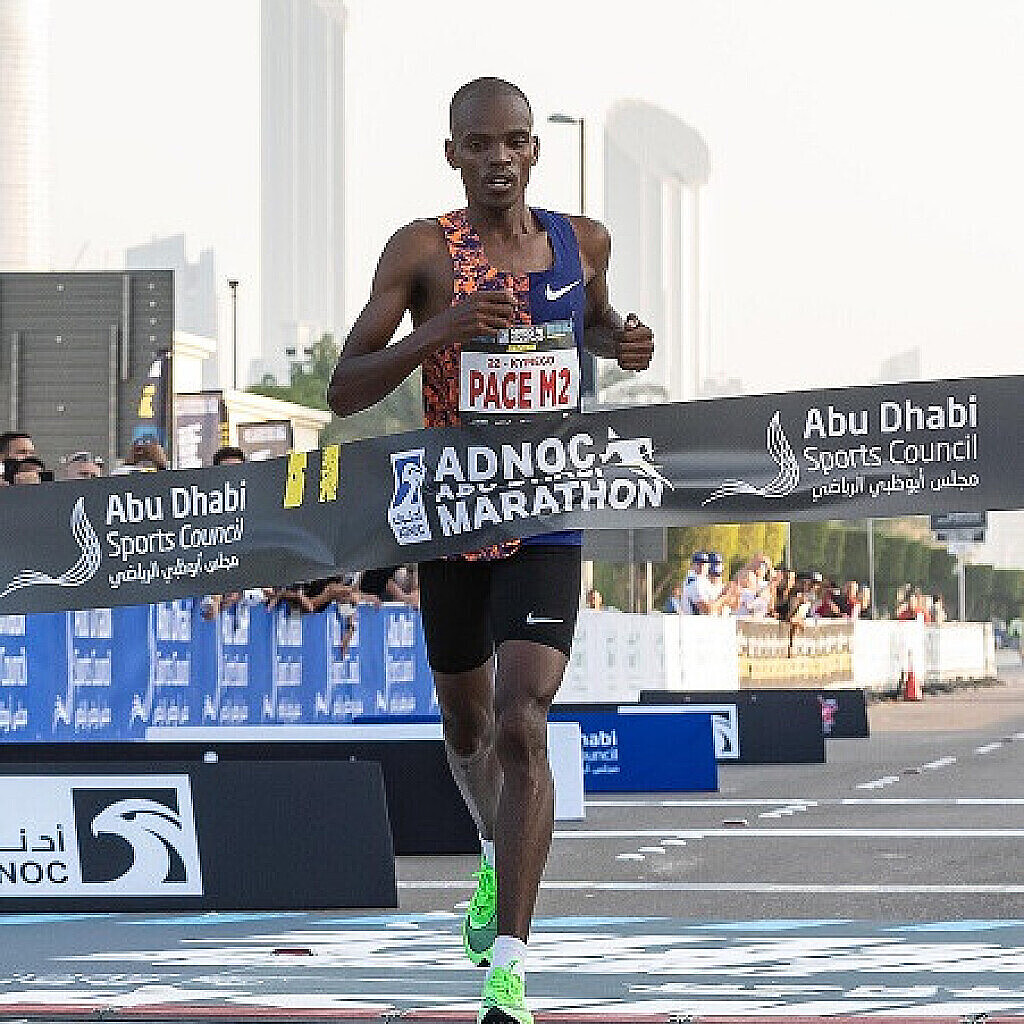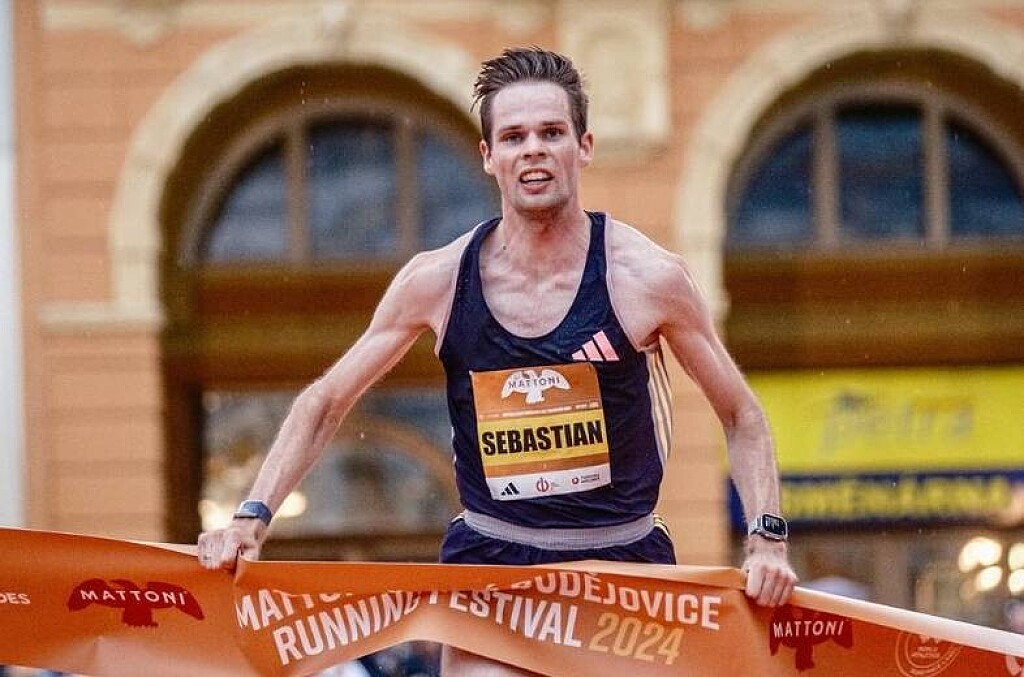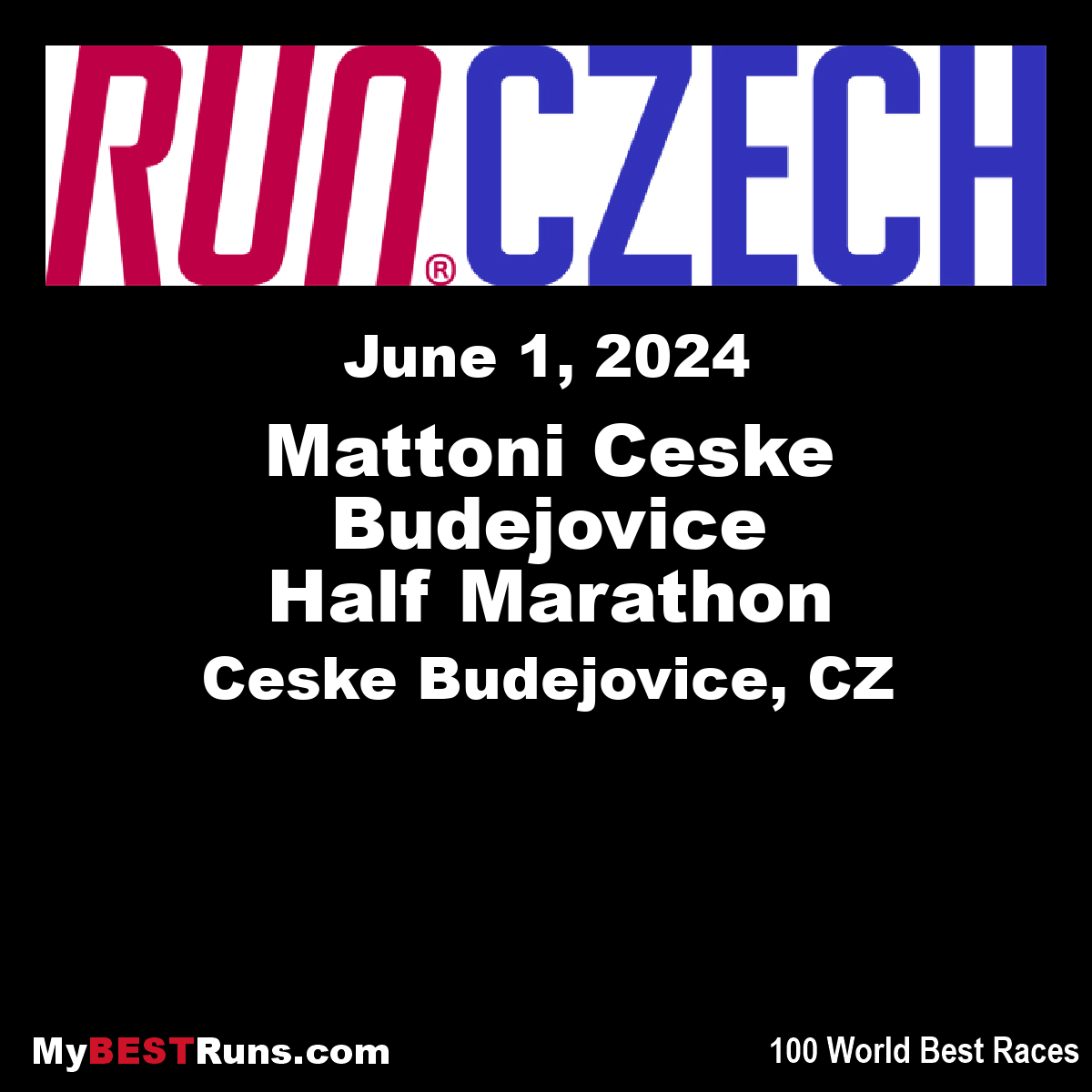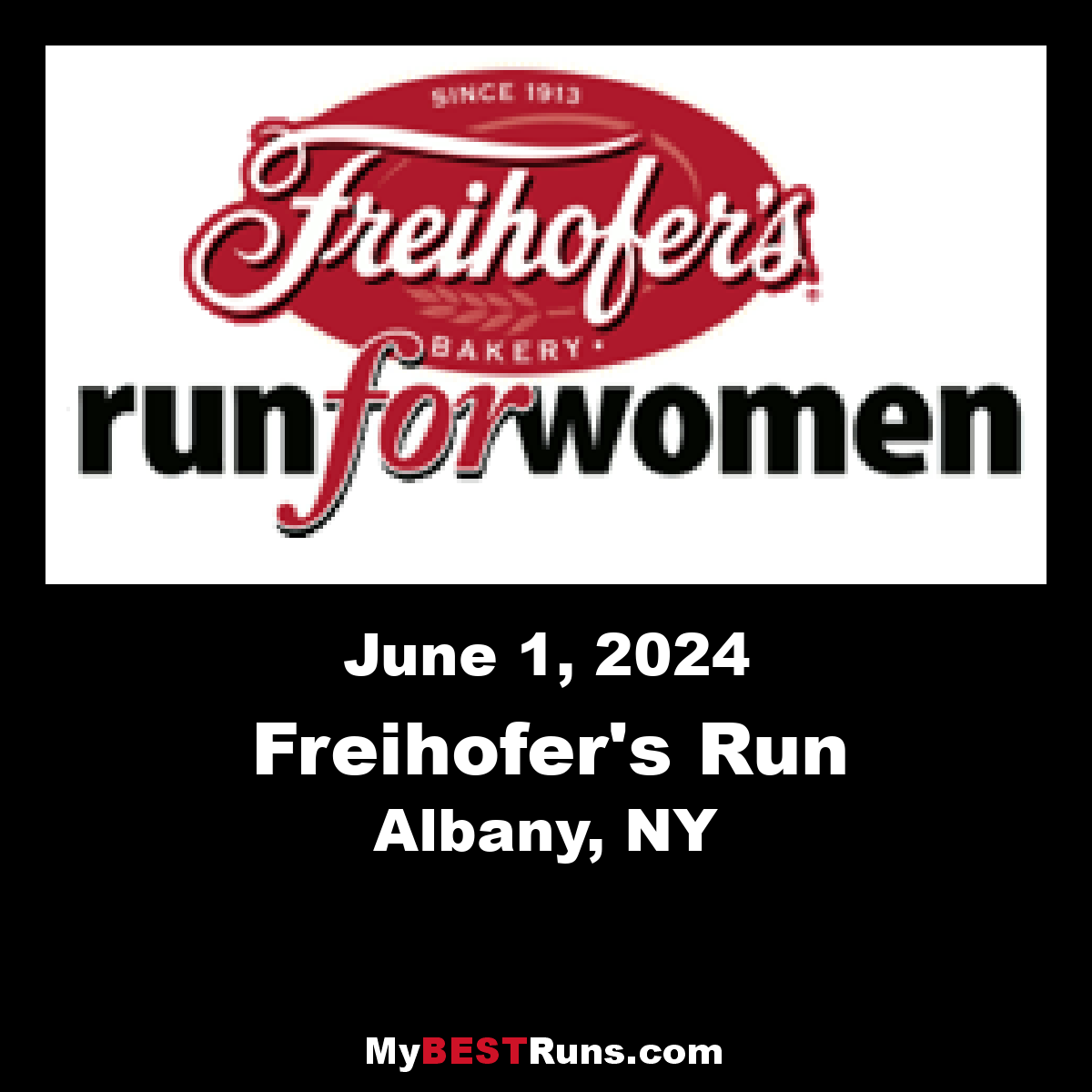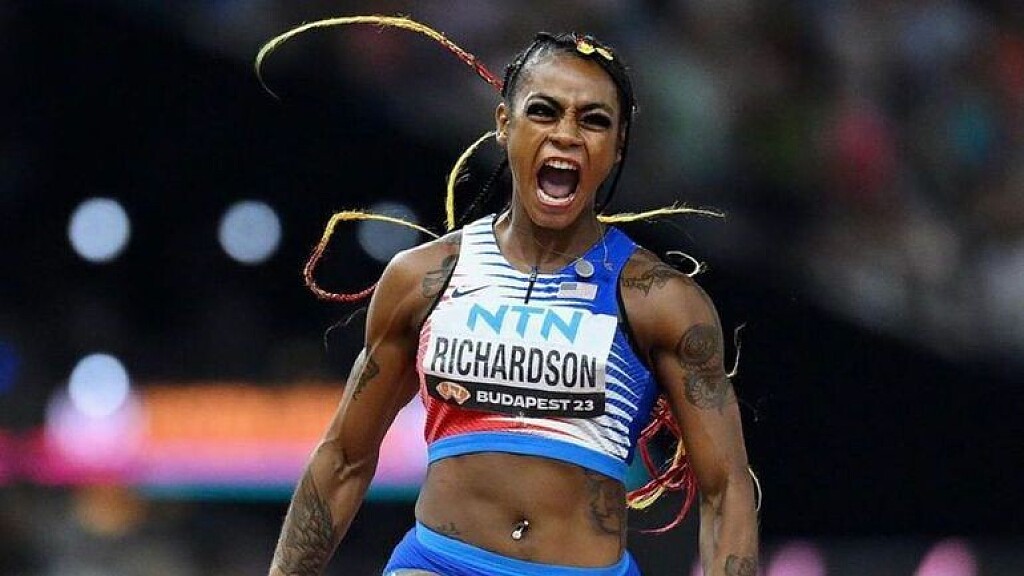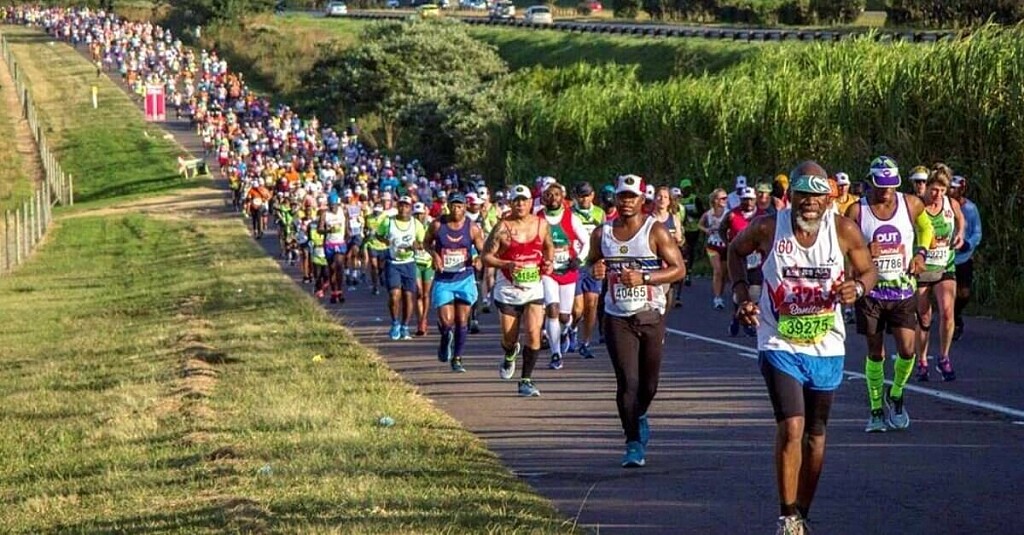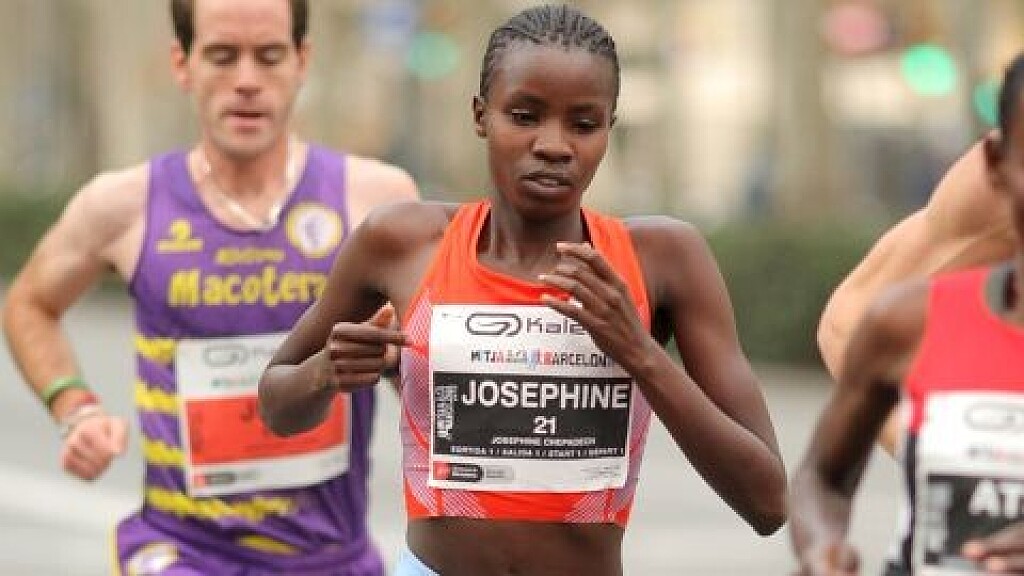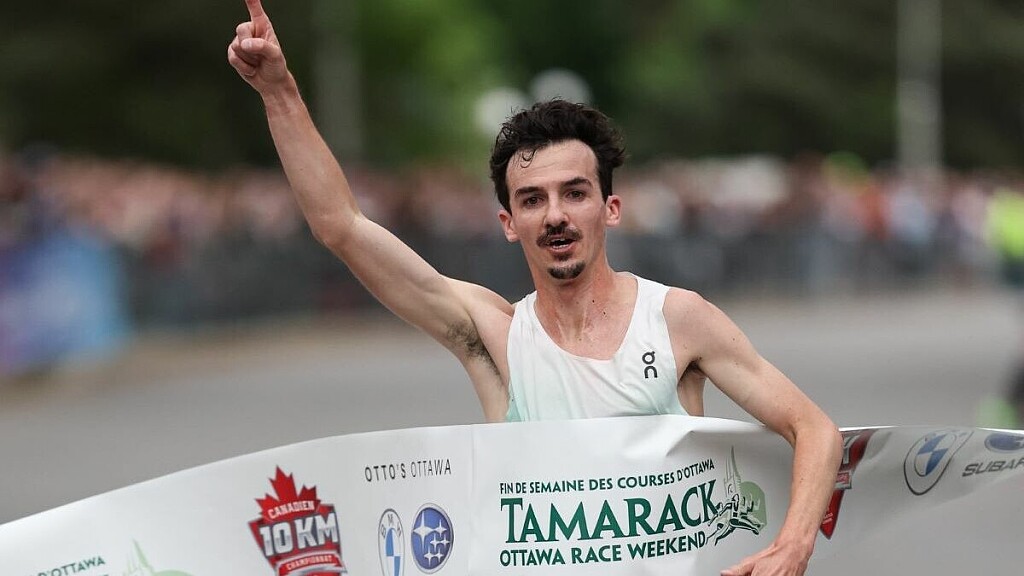Running News Daily
Running News Daily is edited by Bob Anderson in Mountain View, California USA and team in Thika Kenya, La Piedad Mexico, Bend Oregon, Chandler Arizona and Monforte da Beira Portugal. Send your news items to bob@mybestruns.com Advertising opportunities available. Over one million readers and growing. Train the Kenyan Way at KATA Running Retreat Kenya. (Kenyan Athletics Training Academy) in Thika Kenya. Opening in june 2024 KATA Running retreat Portugal. Learn more about Bob Anderson, MBR publisher and KATA director/owner, take a look at A Long Run the movie covering Bob's 50 race challenge.
Index to Daily Posts · Sign Up For Updates · Run The World Feed
David Rudisha explains why he never switched to a longer distance in his prime years
David Rudisha has explained why he could never dare to compete in a longer distance than the 800m.
World 800m record holder David Rudisha has disclosed why he could never dare to run a longer distance than the 800m.
Most 800m runners love blending the two-lap race with the 1500m but Rudisha opted to scale down to the 400m and he admitted that it worked perfectly for him.

In Kenya, Emmanuel Wanyonyi is one of the athletes who does the 800m and combines it with longer distances but reigning world 800m champion Mary Moraa is more of Rudisha’s type. Moraa is always known to compete in the 400m and 600m and she rarely makes appearances in the longer distances.
“If you see 800m runners, you find that some are doing 800m and others can move to 1500m and 5000m. However, others can only move to the 400m and I believe I’m the one who could only do the 400m.

“Even during my training days, I wasn’t doing so well with the endurance and I would struggle a lot. I wasn’t kind of a longer-distance athlete and at some point, at the beginning of the season, my coach would tell me to do 800m and 600m races.
“However, I never liked that because it was tough. During training, I would usually do maybe one 600m race and then go down to 200m or 400m and then the 300m, the one that I loved,” Rudisha said in an interview with World Athletics.
Speaking about his world record at the 2012 London Olympics, Rudisha disclosed that he had worked towards achieving that goal for years.
The two-time Olympic champion was only making his debut at the Olympics and deep down, he knew there was no chance of making mistakes. He explained that his team had worked around the clock and refined the finer things in his training and he was confident of running something special.
However, the two-time world champion noted that it was not an easy thing but he knew if he missed that chance, he would have to wait for four more years to make history.
“London 2012 was my first Olympic Games and as I was training, way back, my coach used to emphasise and he would say we would be in the Olympics and that got into my mind. Over five, six, seven, or eight years, I was focusing on the Olympics.
“Going there was very special and we did very good preparation to make it happen since you can’t make mistakes at the Olympics. I knew that I had a better chance and I was still in the peak of my career and we did very good training.
“At the beginning of the season, I did like two races in New York and Paris and I did 1:41, and going to London, I knew it wasn’t easy. I made my plans and knew that if I executed the race well, I would win the 800m and because I was a front runner, it would be easier for me,” Rudisha said.
(06/07/2024) ⚡AMPby Abigael Wuafula
Netflix’s track and field series, Sprint, to be released on July 2
We are 50 days from the start of the 2024 Paris Olympics, and if you aren’t excited about it yet, maybe this news will help. On Wednesday, Box To Box Films announced that their documentary series Sprint, focused on following the world’s top 100m and 200m sprinters, will be coming to Netflix on July 2.
Sprint will follow the journey of several elite sprinters, including world champions Noah Lyles, Sha’Carri Richardson, Fred Kerley and Dina Asher-Smith, providing a behind-the-scenes glimpse into their world of track and field.

The series takes place over the summer 2023 season and captures the thrilling moments from the Diamond League and Continental Tour, with the final episodes taking place at the 2023 World Championships in Budapest, where Lyles won double gold in the 100m and 200m–the first athlete to do so at a world championship since Jamaica’s Usain Bolt in 2015.
Despite being the only track and field athlete to win six sprint medals at the last two Olympic Games, Canada’s Andre De Grasse is not one of the athletes featured in the series.
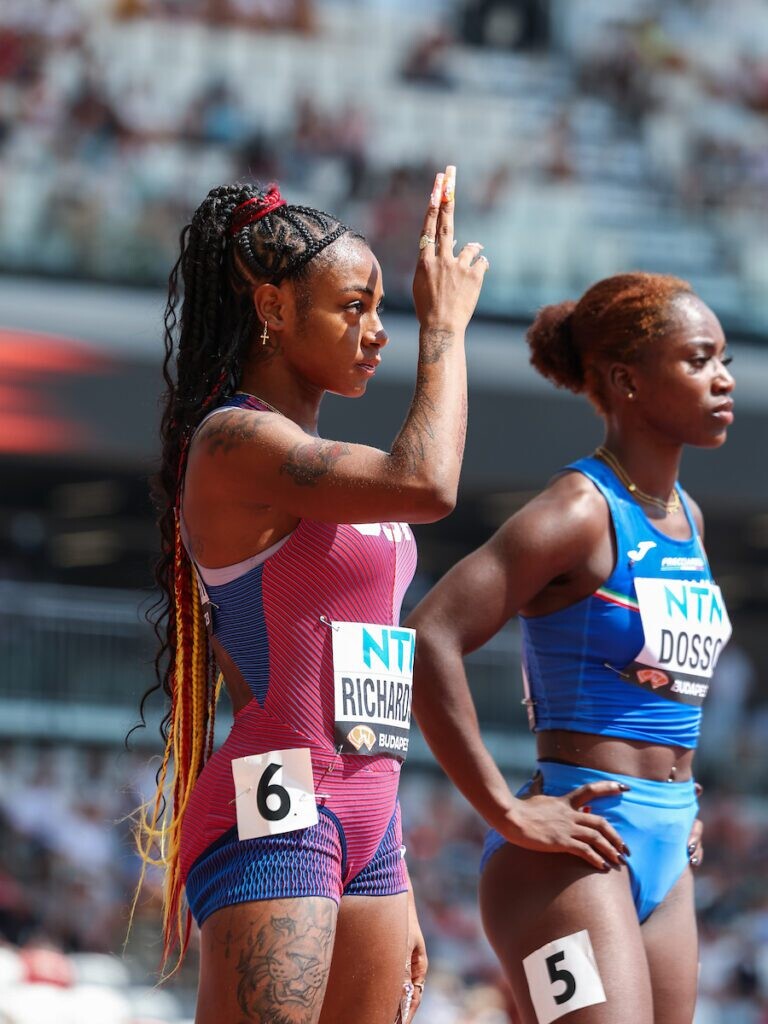
Box To Box Films is the same company behind the Formula One racing series Drive To Survive, the golf series Full Swing and the pro tennis series Break Point.
These series have resonated with existing fans and attracted new audiences to the respective sports. World Athletics hopes Sprint will have the same effect in the lead-up to the Paris Olympics.
If you are a Netflix account holder, you can search for Sprint now on the app, set a reminder and add it to your watch list. This is a series we will most definitely be bingeing, come July 2.
(06/06/2024) ⚡AMPby Marley Dickinson
Timothy Cheruiyot reveals struggles with injuries and overcoming challenges as he chases Olympic glory
Former world 1500m champion Timothy Cheruiyot has opened up on his struggles with injuries and his comeback plan to the top of the men's 1500m.
Olympic silver medallist Timothy Cheruiyot has opened up about his injury bout that saw him struggle to produce great results since the 2022 World Championships in Eugene, Oregon.
Cheruiyot, a former world champion, explained that he had been through a tough time with his injury and explained that he had a torn knee which cost him a lot in terms of training and performing well.

He was a favourite at the 2022 World Championships but failed to live up to the billing, finishing sixth in the final of the 1500m before proceeding to a second-place finish at the Commonwealth Games in Birmingham.
Last season, Cheruiyot had a bitter exit from the World Championships in Budapest, Hungary, where he was eliminated in the semifinal of the race. He explained that the injury has been a nightmare to him but appreciated his management and coach Bernard Ouma for walking with him during the difficult period.

“It was a bit hard because sometimes when an athlete has an injury, it’s a bit of a problem but for me, I thank my management and my coach for coming together and finding a good physiotherapist and a great rehab.
“At the moment I’m very happy to be back…it was hard because I had a torn knee and I’m happy to have come back and I’m training well now,” Cheruiyot said.
This season, the 28-year-old has been in great shape, and has competed in Diamond League Meetings and local races as he eyes the Olympic trials.
He was in action at the Diamond League Meeting in Doha, finishing second behind Brian Komen before almost upsetting Jakob Ingebrigtsen on home soil, at the Diamond League Meeting in Oslo.
Cheruiyot was also in action at the trials for the Africa Senior Athletics Championships, where he doubled in the 800m and 1500m and finished third and fifth respectively.
He has assured his fans of being fully back and will be keen to go back and take his rightful position as one of the greatest 1500m runners the world has ever known.
(06/06/2024) ⚡AMPby Abigael Wuafula
U.S. Olympic Team Trials Track And Field
Eugene, Oregon has been awarded the 2024 U.S. Olympic Team Trials - Track & Field, USA Track & Field and the U.S. Olympic & Paralympic Committee announced today. From June 21 to 30, Hayward Field at the University of Oregon will be home to one of the biggest track and field competitions in the country, as the U.S. Olympic Team...
more...Treadmill desks are becoming more popular—but do they help your running performance?
We all know that exercise has a multitude of benefits, and sitting at a desk all day can take a toll on our mental and physical health. It can be hard to get out for a run sometimes, let alone get in our daily step count. Could a treadmill desk be the answer?
Prolonged inactivity is known to increase the risk of heart disease, Type 2 diabetes and other health issues, with the adage “sitting is the new smoking” underscoring the dangers of a sedentary lifestyle. Conversely, walking as few as 4,000 steps a day has been shown to benefit both mind and body. Treadmill desks, which combine a standing desk with a treadmill, offer a potential solution to counteract sedentary office environments, The New York Times recently reported. But are they a worthwhile investment for runners?
Are they effective?

As treadmill desks become more popular, researchers are examining their efficacy. Studies, though sometimes limited in scope, indicate that treadmill desks can help people stay active, potentially adding an average of two extra miles of walking per day. A 2023 study even found that regular use of treadmill desks increased energy levels, improved mood, and in some cases, enhanced job productivity.
Akinkunle Oye-Somefun, a doctoral candidate at Toronto’s York University and lead author of a recent meta-analysis on treadmill-desk research, says that adding small amounts of activity throughout the day can accumulate. He cautions: “walking on a treadmill desk is a supplement, not a replacement for your regular exercise routine.” In other words—while a treadmill desk may boost training by enhancing your mood and adding to time spent on your feet, it’s not a replacement for your regular running routine.

Be mindful of cost
While treadmill desks can increase daily movement, they come with potential drawbacks. Noise is a significant issue, especially with standard running treadmills—the motor and the sound of footsteps can make it difficult to concentrate, both for the user and their co-workers. Quieter models tend to be more expensive, with treadmills and walking pads running from $280 to $1,400.
Taking those Zoom meetings can be a little challenging if you’re trying to speedwalk, and fine motor skills take a hit: Jenna Scisco, an associate professor of psychology at Eastern Connecticut State University and lead author of a 2023 study on treadmill desks, found that typing becomes more challenging while walking. Despite this, she noted that the health benefits often outweigh these drawbacks.
Build a consistent routine
Let’s face it—a walking desk won’t help you race to your next PB… directly. However, building a daily routine of getting more consistent exercise will make you fitter, and you may find yourself pushing through distance and effort barriers with more ease. While adding a lunchtime walk is still a good option if you’re limited by cost or office dynamics, establishing a regular routine on a treadmill desk can be an effective way to add more movement to your day. Experts suggest starting small, with 30-minute increments, before spending longer periods of your work day moving your legs.
(06/06/2024) ⚡AMPby Keeley Milne
Husband and wife Mudzinganyama, Tshuma aim to ‘Givemore’ at Comrades Marathon
While the Comrades Marathon has produced sibling champions in the past, there is yet to be husband-and-wife winners of the Ultimate Human Race.
Russian twin sisters Elena and Olesya Nurgalieva dominated the race in the early 2000s, with the former winning the race eight times, while the latter was victorious just once.
South African brothers Andrew (2001) and Gift Kelehe (2015) are the other siblings to have conquered the about-90km race run between Durban and Pietermaritzburg.

This year’s race will see a married couple making their debut, with the husband and wife sure to start among the contenders.
Last year’s Two Oceans Marathon champion Givemore Mudzinganyama, who was third in this year’s edition, and his wife Nobuhle Tshuma – fourth in the Two Oceans in 2023 – will line up at the Durban City Hall on Sunday morning intent on making history.
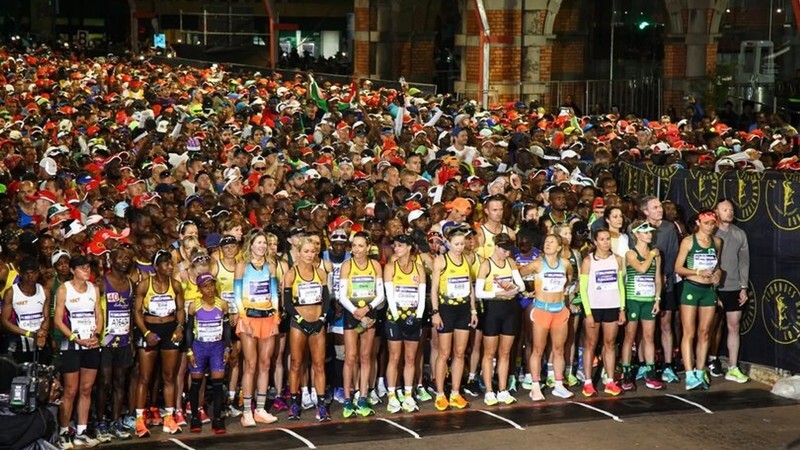
The couple that runs for Entsika Athletics Club are confident of getting into the top-10 gold medal positions.
But being the ambitious athletes they are, they will have victory in mind when the starting gun sends the runners off towards Scottsville Racecourse.
Somewhat opposites, as most couples tend to be, Tshuma is very extroverted and outspoken, while Mudzinganyama is somewhat shy – although not on the road.
(06/06/2024) ⚡AMPby Matshelane Mamabolo MERCURY SPORT Husband and wife Mudzinganyama, Tshuma aim to ‘Givemore’ at Comrades Marathon
Comrades Marathon
Arguably the greatest ultra marathon in the world where athletes come from all over the world to combine muscle and mental strength to conquer the approx 90kilometers between the cities of Pietermaritzburg and Durban, the event owes its beginnings to the vision of one man, World War I veteran Vic Clapham. A soldier, a dreamer, who had campaigned in East...
more...Boston Athletic Association unveils revised unicorn logo for Boston Marathon
On the occasion of Global Running Day, the Boston Athletic Association is unveiling a revised version of its iconic unicorn logo.
B.A.A. officials said the new logo is intended to be a forward-facing and athletic symbol of the organization's future.
"Between our mass participatory events and our support of philanthropic organizations, we aim to spearhead continued growth and enthusiasm around the sport of running while supporting those around us," said Jack Fleming, B.A.A. President and CEO.

Elements of the new logo include:
Facing forward, the emblem eyes the future and many miles ahead.

Spike’s jawline is enhanced, demonstrating the athletic and gritty nature of Boston.
With alert and focused eyes, Spike is determined to conquer the challenging Boston Marathon course.
Pointing northeast, Spike’s horn represents the direction of the Marathon route on a compass from start to finish.
The flowing mane shows swift movement on the pursuit of a healthy and active lifestyle – directly tied to the B.A.A.’s mission.
The new base of the unicorn showcases two sides coming together, the merging of the B.A.A.’s history and future.
Within Spike’s neck is a gap between two lines, symbolic of breaking the champion’s tape at the finish line.
13 points are on the mane, one for each decade of B.A.A. heritage.
B.A.A. officials said the finish line on Boylston Street is being repainted Wednesday to feature the updated logo.
WCVB is the official broadcast partner of the B.A.A. and the Boston Marathon.
(06/05/2024) ⚡AMPby Phil Tenser
Boston Marathon
Among the nation’s oldest athletic clubs, the B.A.A. was established in 1887, and, in 1896, more than half of the U.S. Olympic Team at the first modern games was composed of B.A.A. club members. The Olympic Games provided the inspiration for the first Boston Marathon, which culminated the B.A.A. Games on April 19, 1897. John J. McDermott emerged from a...
more...World 10km record holder Rhonex Kipruto handed six-year doping ban
Rhonex Kipruto is the latest Kenyan athlete to be disgraced over doping as he has been handed a six-year suspension with his big achievements quashed.
Kenya's Rhonex Kipruto has been banned for six years over a doping offence, adding to the grim statistics for the country.
Athletics Integrity Unit (AIU) handed the punishment to the 24-year-old on Wednesday, meaning he will lose his 10 kilometres road race world record and a World Championships bronze medal.

Kipruto, who won the 10,000 metres bronze in the 2019 World Championships in Doha, had been provisionally suspended for an anti-doping violation in May last year and is now banned until May 2029.
Kipruto broke the 10km road race world record in 2020 in Valencia and won the 10,000 metres at the 2019 Stockholm Diamond League, achievements that are now null and void.

A Disciplinary Tribunal ruled that there were irregularities in Kipruto's Athlete Biological Passport (ABP), which shows discrepancies that can reveal the effects of doping.
"The Tribunal rejected Kipruto's defence, concluding the 'cause for the abnormalities in the ABP is more likely to be due to blood manipulation' such as through the use of recombinant human erythropoietin (rEPO)," AIU said its ruling, adding that there was no other plausible explanation for the abnormal values.
Kipruto had denied the Anti-Doping Rule Violation (ADRV) charge but the panel said it was "comfortably satisfied" that the Kenyan was involved in a "deliberate and sophisticated doping regime over a long period of time".
Kipruto can still appeal to the Court of Arbitration for Sport.
The disgraced long-distance athlete joins a long list of Kenyan runners who have been suspended over various doping offences.
His suspension comes just a day after the Anti-Doping Agency of Kenya suspended 33 sportsmen and women for failing doping tests.
(06/05/2024) ⚡AMPby Joel Omotto
What is the meaning of Global Running Day? Inspirational quotes for runners
At its core, Global Running Day is about community and solidarity. It's a day when runners from all corners of the world come together
Global Running Day, celebrated annually on the first Wednesday of June, is a worldwide celebration of running that encouragespeople of all ages and abilities to get moving. It is a day to recognize the positive impact running has on physical and mental health, as well as the sense of community it fosters.
The initiative, led by the New York Road Runners (NYRR), aims to inspire people to lace up their shoes and experience the joy of running. Whether it’s a short jog around the block or a longer distance, Global Running Day welcomes everyone to participate and embrace a healthier lifestyle.

The day serves as a reminder of the many benefits associated with running, including improved cardiovascular health, increased energy levels, stress reduction, and enhanced mood. It also promotes the social aspect of running, encouraging people to connect with others through group runs, races, or virtual challenges.
The Spirit of Togetherness

At its core, Global Running Day is about community and solidarity. It’s a day when runners from all corners of the world come together, not just to run but to share their stories, goals, and experiences.
Whether you’re a seasoned marathoner or a beginner taking your first steps into the world of running, Global Running Day welcomes you. The inclusive nature of this celebration fosters a sense of belonging, reminding us that running is a universal language that transcends borders and cultures.
Promoting Health and Wellness
Running is one of the simplest yet most effective ways to maintain physical and mental health. Global Running Day serves as a reminder of the numerous benefits of running, from improved cardiovascular health and stronger muscles to reduced stress and enhanced mood. By encouraging people to participate in this activity, the event aims to inspire healthier lifestyles and promote the importance of regular exercise.
Inspiring Future Generations
Global Running Day is much more than a date on the calendar; it’s a movement that encapsulates the joy, community, and benefits of running.
It’s a day to celebrate the collective love for running, inspire new runners, and promote health and wellness across the globe. As we lace up our shoes and hit the road, we’re reminded that every step we take brings us closer together, creating a healthier, happier world. So, whether you’re running alone, with friends, or as part of a larger event, take a moment to appreciate what Global Running Day means to you and the global community of runners.
The best quotes from Eliud Kipchoge
Eliud Kipchoge is an inspiration for runners. The double Olympic champion in the Marathon (Rio 2016 and Tokyo 2020) is also the only human to have run the 42.195 kilometers in less than two hours. He also holds the world record for the Marathon with a time of 2:01:39, which he achieved in Berlin.
Kipchoge is an athlete born in Kenya. Running comes naturally to him; he has been doing it since he was a child when he had to run 8 kilometers to get to school and another 8 kilometers to return home.
Besides having a technique that can be considered perfect, Eliud Kipchoge has managed to convey to runners around the world the joy of running and the importance of the mental factor.
Here are some phrases from Kipchoge and some other runners, which are an inspiration to celebrate this Runner’s Day 2022 together.
“Humans have no limits; they can achieve whatever they set their minds to. You must think beyond your own limits, run against the unthinkable.” – Eliud Kipchoge
“Athletics is not so much about the legs. It’s about the heart and mind.” – Eliud Kipchoge
“Only the disciplined in life are free. If you are undisciplined, you are a slave to your moods and passions.” – Eliud Kipchoge
“There are no secrets in my training. What is truly crucial is believing that progress is possible… believing that you can do anything.” – Eliud Kipchoge
“The ability to achieve your goals is not possible without hard work and self-confidence.” – Eliud Kipchoge
“I always aim to give my best until I reach the finish line.” – Eliud Kipchoge
“Never stop running for fun.” – Eliud Kipchoge
“Passion is a choice. You have to choose to be great. It’s not an opportunity; it’s a choice.” – Eliud Kipchoge
“When you feel pain, try to forget that pain. The only way to achieve this is by smiling, being happy, and enjoying running.” – Eliud Kipchoge
“Marathon is life. And life is where you progress.” – Eliud Kipchoge.
(06/05/2024) ⚡AMPby Laura Islas
Global Running Day
What is Global Running Day? Global Running Day is a worldwide celebration of running that encourages everyone to get moving. It doesn’t matter how fast you run or how far you go—what’s important is that you take part, and how you do it is up to you. Run a lap around your block, take your dog for a long walk,...
more...World Athletics Adds Ranking Spots to Olympic Men’s Marathon Field — American Leonard Korir Will Run in Paris
The United States will have three men in the 2024 Olympic marathon after all. Following months of uncertainty, World Athletics added one universality place and four rankings places to the Olympic marathon field on Tuesday. The four ranking spots were awarded to athletes from Chile, South Africa, the United States, and Australia, meaning that Leonard Korir will join Americans Conner Mantz and Clayton Young on the Olympic marathon start line on August 10.

Korir’s spot had been in jeopardy after World Athletics added 11 universality places on May 8, but the Road to Paris list of qualifed athletes has been updated and American CJ Albertson is now listed as qualified at spot #84. Per USATF selection procedures, Albertson’s place will pass to Korir, the third-placer at February’s US Olympic Marathon Trials. Korir’s coach Scott Simmons confirmed to LetsRun.com that Korir is now qualified and will compete in the Olympic marathon on August 10.

Australia’s Wide World of Sports reported that in recent weeks, World Athletics had been working on a solution to fit some highly-ranked athletes into the Olympic marathon while respecting Olympic sport quota limits set by the International Olympic Committee.
It was not immediately clear why World Athletics added four ranking places on Tuesday; this story will be updated as LetsRun.com learns more.
(06/05/2024) ⚡AMPby Jonathan Gault
Paris 2024 Olympic Games
For this historic event, the City of Light is thinking big! Visitors will be able to watch events at top sporting venues in Paris and the Paris region, as well as at emblematic monuments in the capital visited by several millions of tourists each year. The promise of exceptional moments to experience in an exceptional setting! A great way to...
more...ADAK suspends highest number of Kenyan athletes since January last year
The Anti-doping Agency of Kenya has unveiled the highest number of athletes banned for violating various doping rules.
The Anti-doping Agency of Kenya has banned 33 Kenyan athletes for violating the various doping rules as per the Athletics Integrity Unit.
The list includes 26 runners with the remaining coming from basketball, rugby and handball. In road running, one of the most shocking athletes to have made the list of shame is Joshua Belet, the 2023 TCS Amsterdam Marathon champion.

According to reports, this marks the highest number of suspended athletes since January last year, when Kenya was on the verge of being banned by World Athletics. However, it is a move that was anticipated since there has been increased testing.
Belet, a 26-year-old long distance runner, has been suspended for the presence of Anabolic Androgenic Steroids, Testosterone, Adiol, Pregnanediol, Androsterone and Etiocholanolone. Belet was a promising talent who even made his national team debut at the World Championships in Budapest, Hungary but did not finish the race.

Dorcas Kimeli has also been suspended and she was also a promising athlete who had represented Kenya in a couple of events including the 2020 World Half Marathon championships where she finished 11th. As reported by Nation Sport, Jepchumba has been suspended for tampering with any part of the doping control.
Meanwhile, upcoming sprinters Duke Osoro and Joan Jeruto have also been added to the list of shame with the 2012 World Under-20 5000m champion David Bett also making the list.
Brian Wahinya, a former Kenya Sevens player has also found himself in hot soup alongside fellow players Charlton Mokua and Zeden Lutomia. The trio has been suspended for the presence of Cannabinoids, linked to cannabis sativa.
The basketball players who have gotten themselves in the list of shame include Alex Ramazani, Albert Onyango and James Mwangi Maina.
(06/04/2024) ⚡AMPby Abigael Wuafula
David Rudisha names 3 key athletes to shape 800m race this Olympic season
World 800m record holder David Rudisha has revealed the three key athletes who will shape the two-lap race this Olympic season and might even threaten his world record.
World 800m record holder David Rudisha has singled out three athletes that could shape the 800m at the Paris 2024 Olympic Games and beyond.
Rudisha was an 800m maestro and defined the two-lap race in his prime and he believes other athletes are coming up and have the ability to change the quality of the 800m race.

The two-time Olympic champion set his first 800m World Record of 1:41.09 on August 22, 2010 in Berlin, Germany before lowering his time to clock another world record of 1:40.91 set during the 2012 London Olympic Games.
No athlete has gotten near to the world record but the two-time world champion believes the trio of Emmanuel Wanyonyi, Marco Arop and Djamel Sedjati have the ability to redefine that.

“From Kenya, we have Emmanuel Wanyonyi. Marco Arop from Canada. And I saw also a young kid Djamel Sedjati from Algeria running the world-leading time in Ostrava,” Rudisha told AFP.
“This is really amazing. We are looking forward to seeing how they are going to perform. In the Olympics, anything can happen. It's always very competitive and everybody goes there to win. So, there's a lot of expectation.”
Wanyonyi, the youngest of the three, has been in great form this season, and he will certainly be an athlete to watch in the city of love.
The world 800m silver medallist has been unbeaten in the 800m this season, winning the Kip Keino Classic and the Diamond League Meeting in Rabat, Morocco. He also set the road mile world record at the Adizero road to records event.
Meanwhile, Arop, the reigning world champion, has only raced once in the 800m outdoor and won in the Diamond League Meeting in Xiamen. He has been in great form, however, in his indoor events and will certainly be out to give his competitors a run for their money one more time.
Sedjati, 25, has also proven to be a strong athlete, striking with a world leading time of 1:43.51 in Ostrava in his season opener. He will also be looking to impress at the Paris 2024 Olympic Games, following his silver medal at the 2022 World Championships in Eugene, Oregon.
(06/04/2024) ⚡AMPby Abigael Wuafula
Registration dates for the 129th Boston Marathon announced
The Boston Athletic Association (B.A.A.) announced Monday that registration for the 129th Boston Marathon will take place over five days, from Sept. 9–13 at www.baa.org
The field size for the 129th Boston Marathon, to be run on Monday, April 21, 2025, will be 30,000 participants.

Qualifier registration will open on Sept. 9 at 10 a.m. and will close on Sept. 13, at 5 p.m. Any athlete who has achieved a currently valid Boston Marathon qualifying time may submit a registration application during registration week.

Applications will be accepted until 5 p.m. on Sept. 13. The 2025 Boston Marathon qualifying window began on Sept. 1, 2023, and will close at 5 p.m. on Friday, Sept. 13. If space is still available after the conclusion of registration week, registration will re-open on Sept. 16.
Qualifying standards across all divisions will remain the same as they were for the 2024 Boston Marathon.
(06/04/2024) ⚡AMPby Andrew Clark
Boston Marathon
Among the nation’s oldest athletic clubs, the B.A.A. was established in 1887, and, in 1896, more than half of the U.S. Olympic Team at the first modern games was composed of B.A.A. club members. The Olympic Games provided the inspiration for the first Boston Marathon, which culminated the B.A.A. Games on April 19, 1897. John J. McDermott emerged from a...
more...World Athletics announces new ultimate championship event in 2026
"We want to feature the biggest stars and make it a must-watch global sporting event," said World Athletics president Sebastian Coe.
On Monday, World Athletics unveiled plans for a new biennial event to take place during non-world championship/Olympic years, and serving as a lucrative end-of-season finale. The World Ultimate Championships will be a revolutionary global event designed to redefine the athletics calendar and crown the best of the best in athletics. This ultimate championship will bring together world champions, Olympic champions, Diamond League winners and the year’s top-performing athletes to compete for the top prize of USD $150,000.
In Sept. 2026, Budapest will play host to the inaugural World Ultimate Championships, a three-day event boasting a $10 million prize purse. This “best vs. best” competition will feature the top 16 athletes from the 2026 season competing in a track semi-finals and finals format, while the top eight athletes in field events (throwing and jumping) will battle it out in the field finals. Each event winner will pocket USD $150,000—the highest amount of prize money offered at a track and field championship—with additional prize money distributed to the eight finalists. This substantial financial incentive aims to elevate the sport and attract the world’s top athletes.
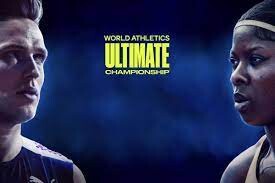
World Athletics President Sebastian Coe said in a press release: “This is about the best of the best; only 400 athletes from about 70 countries. We want this to look different, we want this to feel different (than a World Championships).” Coe’s vision for the World Athletics Ultimate Championship is to deliver high action and excitement for fans. “We want to feature the biggest stars and make it a must-watch global sporting event.”
Designed to captivate millions of television viewers worldwide, the championship will feature a compact three-day athletics schedule, with each evening session lasting under three hours. The format includes semi-finals and finals for track events, and straight finals for field events, ensuring a thrilling and fast-paced competition. According to World Athletics, athletes will not compete for their sponsors, but instead for their national teams, adding an extra layer of pride and excitement to the competition.

The press release reveals that the ultimate event will include the traditional sprint disciplines, middle and long-distance races, relays, jumps and throws. The future hosts beyond the inaugural World Athletics Ultimate Championship in Budapest have not been announced.
(06/04/2024) ⚡AMPby Marley Dickinson
Former Milano Marathon champion provisionally suspended by AIU for whereabout failures
The 2019 Abu Dhabi Marathon champion has gotten himself in bad books with the Athletics Integrity Unit following his recent charge.
The 2019 Abu Dhabi Marathon champion Reuben Kipyego has been provisionally suspended by the Athletics Integrity Unit for whereabout failures.
The AIU, in an announcement on Tuesday, June 4, noted that Kipyego has been suspended temporarily from participating in any competition or activity in athletics prior to a final decision at a hearing conducted under the World Athletics Anti-Doping Rules or the Integrity Code of Conduct.
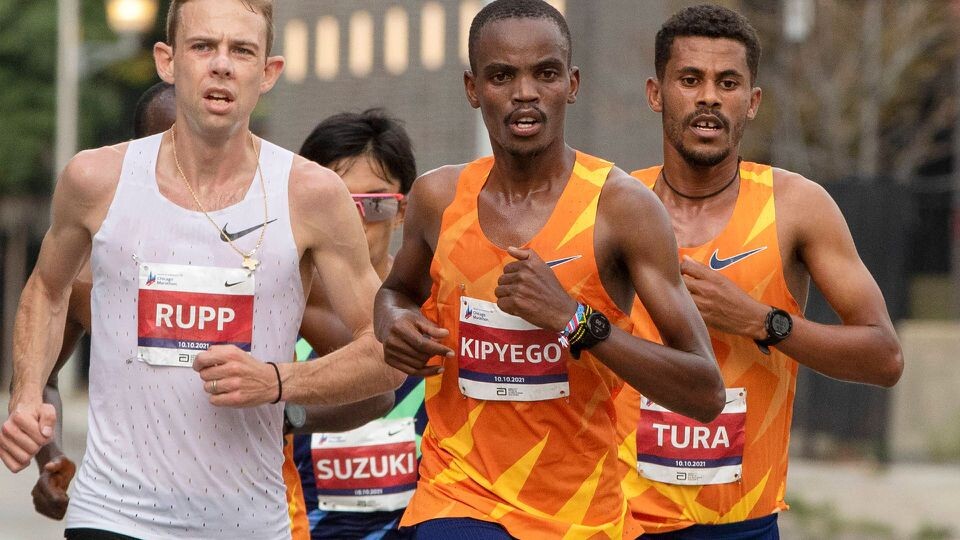
Kipyego’s final race was the NN Rotterdam Marathon in 2022 where he finished an impressive third. He has also competed in three races in 2021 where he struck with a win at the Milano Marathon and later finished eighth at the Chicago Marathon before finishing second at the Abu Dhabi Marathon.
He has been competing sparingly and launched his career with the marathon, hence no record of him competing on the track. He started off his career with the full marathon at the 2019 Maratón de Buenos Aires Ñandú where he finished second.

Meanwhile, for a provisional suspension, the AIU further noted that some of the cases remain under investigation, while others are the subject of a notice of charge and so will also appear on the list of Pending First Instance cases.
AIU further noted that a provisional suspension is mandatory under the World Athletics Anti-Doping Rules following an adverse analytical finding for any non-specified substance on the Prohibited List.
A Provisional Suspension may be imposed in other doping cases depending on the nature and circumstances of the case in question. It is imposed in a non-doping case does not in any way abrogate the presumption of innocence and it is not an early determination of guilt. Rather, it is an order made on a precautionary basis to safeguard the interests of the sport.
(06/04/2024) ⚡AMPby Abigael Wuafula
Why world 10km record holder Agnes Jebet prefers running against male athletes
Record breaker Agnes Jebet has opened up on the unique reason why she loves training and competing against male athletes.
World 10km record holder Agnes Jebet has revealed the unique reason why she loves training and racing against male athletes.
Speaking in an exclusive interview with Maurten, the Kenyan noted that she is a strong athlete and most of the time, it’s hard to find women who can match her energy levels. The 23-year-old added that some men also find it difficult to compete against her during training with some always begging her to reduce the pace.

Maurten also observed some men struggling and were unable to match her prowess during training. “You saw them…behind me, asking to reduce the pace. Running is like food for me — you don’t miss food, I don’t miss running,” Jebet added.
Meanwhile, Jebet has managed to maintain her status as one of the greatest road runners, being crowned the world record holder in the 10km road race, at her young age.

During the 2023 Transylvania 10km, Jebet set a new World Record but her result was not recognised after World Athletics re-measured the course and found it to be 25 metres short. She officially became the first woman to run under 29 minutes for 10,000 metres — ratified, at the race in Valencia earlier this year.
Podiums and victories have been her portion, but this season, after her world record and threatening the late Agnes Tirop’s women-only world record, she has not been in her greatest shape.
However, she remains strong despite the hurdles and she has managed to always brush off moments of disappointment.
"I fought for this record. When the course was short, maybe I was not ready for it. When the weather is bad, I understand. I had to make my mind strong and not let it discourage me," she added.
"Patience and discipline... you train hard and then you go and win easy. Let it be painful today and then the fruits come next week."an say, I’m a fighter. It’s hard to find strong women who can go with me, so I train with the guys. I like to try and go with their speed,” Jebet said.
(06/03/2024) ⚡AMPby Abigael Wuafula
Cross-country guru Lucy Mawia slapped with a three-year doping ban
Lucy Mawia has been banned for three years by the Athletics Integrity Unity for the presence of three banned substances in her body.
The 2022 Belgrade Half Marathon Lucy Mawia has been slapped with a three-year ban by the Athletics Integrity Unit for an anti-doping rule violation.
Mawia, popularly known for her cross-country prowess, will be eligible to compete once again from March 27, 2027. Her results from March 10 this year, will also be disqualified.

As per World Athletics, athletes representing a foreign Member Federation or other Areas are regarded as out of competition participants (OC).
Earlier this year, the Italian Anti-doping tribunal suspended Mawia following a violation of an anti-doping rule.

As per the Italian anti-doping agency, Mawia’s sample was found positive for the presence of Efedrina, Oxycodone, and its metabolite Oxymorphone. The substance is an active metabolite of oxycodone produced via CYP2D6-mediated metabolism.
Her career was taking shape and in 2022, she won the 2022 World Cross Country Tour. In 2022, Mawia dominated the races at the start of the tour, winning in Bydgoszcz in October and in Soria and Alcobendas in November.
Mawia kicked off the 2023 cross-country campaign with a third-place finish in Amorebieta and sixth place in Atapuerca. The 2023 15K Nocturna Valencia Banco Mediolanum champion was also third in Atapuerca in November and second in San Vittore Olona in January in 2023.
This means her results from the 5km Route de Lille and the Italian Cross-Country Championships have been disqualified. In France, she finished fifth in the road race before clocking 27:50 to cross the finish line in her cross-country race in Italy, competing as an out of competition participant.
(06/03/2024) ⚡AMPby Abigael Wuafula
Rath and Vinuelas take top honors in 2024 Fontana Days Half Marathon
Nathan Rath came all the way from Chandler, Arizona to participate in the Fontana Days Half Marathon, and he was certainly pleased with the outcome of his journey.
The 42-year-old Rath took first place with a time of 1:10:16 on the pleasantly cool morning of June 1.
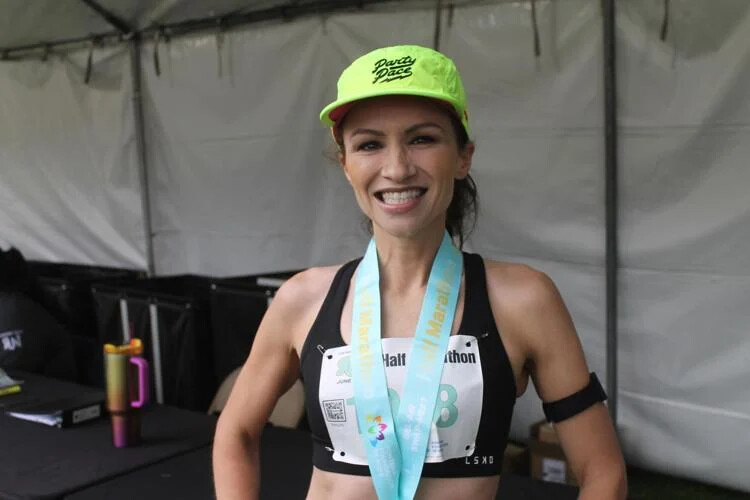
“The day was beautiful,” he said. “Great weather, great course — it was a good experience.”
Traversing the 13.1 miles down Sierra Avenue from Lytle Creek, Rath was able to pull away from tough competitors Helio Carrillo (who came in second place in 1:10:29) and his friend Erik Chazin (who was third in 1:10:51) and cross the finish line at Fontana City Hall.

“I had a good push at the end,” he said. “I was here with my friend Erik and we pushed each other. Without that, it would have been a lot tougher.”
The first-place female finisher (and 13th place overall) was Abbey Vinuelas, a 38-year-old resident of the Northern California city of Fairfield.
Vinuelas was all smiles after receiving her award.
“What a beautiful course,” she said. “It really energized me all the way down, and I absolutely loved it.”
It was the third half marathon that Vineulas had entered in the past two months, and she took top honors each time.
More than 1,000 runners took part in the Fontana Days Half Marathon this year.
(06/03/2024) ⚡AMPFontana Days Half Marathon
The Fontana Days Run Half Marathon began back in 1955 with a reported 200 participants. Race founders were unaware that the annual Half Marathon would grow to include over 2,000 participants. The Fontana Days Run provides participants with a safe, festive, and well organized event. The Annual Fontana Days Run features a Half Marathon, 5K Run, 5K Race Walk, 5K...
more...German Hendel dominated the Mattoni Ceske Budejovice Half Marathon
This year’s half marathon in České Budějovice was newly held under the brand Mattoni Running Festival. The winner was German Sebastian Hendel. Among the women, Ukraine’s Maryna Nemchenko triumphed, improving the European record. Patrik Vebr and Hana Homolkova were the best Czech runners, which carries the World Athletic Road Race Label.
The race
The winner in the České Budějovice Half Marathon was Sebastian Hendel from Germany. From the start he was in a large lead pack, but before the halfway point he was running alone. Hendel ran the South Bohemia half marathon well and on pace to break the European record. However, he missed it by half a minute, finishing in the time of 1:03:38.

“I’m really happy that my winning streak in RunCzech races continues. I tried to break the time under one hour and three minutes. It was good at the tenth kilometre, but as time went on it got worse and my legs were hurting. It was a great experience, I enjoyed my first start in České Budějovice,” said Hendel. “When I was running back to the square, many people were cheering my name. It was a really great atmosphere,” added Hendel.
The second place went to Italian Daniele D’Onofrio, and third was Ukrainian Mykola Mevsha, who improved his personal best significantly. The best Czech runner was Patrik Vebr (1:08:38), bettered Petr Pechek and Tomáš Křivohlávek.

“Although I don’t really like to run races in training pace, I chose this strategy for today. My coach and I decided to do it mainly for health reasons and also because of the upcoming track races. But the overall assessment is positive and I am glad that especially my health is holding up,” Vebr summed up.
The fastest woman was Maryna Nemchenko from Ukraine, who ran a significant part of the race alone trying to catch some men to help her pace. “If I had run with another female competitor, it would have been easier, running alone is hard. I always tried to catch up with whoever was ahead of me, I’m satisfied,” Nemchenko assessed after the race.
The Ukrainian surpassed the best European race time of Tereza Hrochova from 2022 by half a minute. Her compatriot Nataliya Semenovych finished second, while Moldova’s Lilia Fisikovici finished third. Hana Homolkova succeeded in a close battle between the Czech competitors, beating Aneta Císařová. Tereza Jagošová finished third.
(06/03/2024) ⚡AMPby Christopher Kelsall
Mattoni Ceske Budejovice Half Marathon
Held in the stunning city with over 750 years of history, the Mattoni Ceske Budajovice Half Marathon is one of the most exciting races of the RunCzech Running League. With both speed and beauty, it offers a flat and fast course that led to a great result of the race premiere in 2012. Start the race in the colorful heart...
more...The Research on Beetroot Supplements and Exercise Is Kind of Awesome
Beetroot powder is available as a standalone product, though it also pops up in a bunch of other supplements, such as pre-workout energy boosters and heart health chews, as an added ingredient.
Supplement companies claim beetroot powder boosts energy, increases athletic performance, and promotes heart health by improving blood pressure and circulation. Often, these companies will cite beets’ ability to boost nitric oxide, a molecule that helps blood vessels expand and contract.

Let's get to the root of those claims.
What Is Beetroot Powder?
IT'S BEETS, BUT in powder form.
And know that beets, as in the root vegetable, are good for you—no debate there. “Beetroot contains two types of bioactive constituents, betalains (which give the purple color) and nitrate (which also occurs in similar amounts in some other common vegetables, like celery and lettuce),” says Kirsten Brandt, Ph.D., senior lecturer at the Human Nutrition & Exercise Research Centre at the UK’s Newcastle University. Betalains have heart-protecting properties, and your body converts nitrate into nitric oxide to help regulate your circulatory system and reduce inflammation.
More good news: These compounds stay mostly intact when beets undergo processing into powder or even juice. Concentrations vary by beet variety and processing method, but research suggests both powders and juices can both hold onto in those beneficial compounds. (Fun fact: Often, beetroot powder is just freeze-dried beet juice).
What Is Beetroot Powder Good For?
IN SUPPLEMENT FORM, beets might:
Moderately Reduce Blood Pressure
A study review published in Frontiers in Nutrition showed that people who consumed beetroot juice daily for anywhere from three to 60 days reduced their systolic blood pressure by five more points than the control group. The reason: Nitric oxide helps blood vessels relax.
Make Hard Workouts Easier
A study review in the Journal of the International Society of Sports and Nutrition suggests that beetroot juice supplements might boost power and improve performance during high-intensity exercise. Again, nitric oxide comes into play by helping your muscles maintain phosphocreatine, a building block that otherwise depletes during a hard workout. Beets also improve the release and use of cellular calcium to help you contract muscles faster.
Improve Muscle Recovery
A study review published in Sports Health suggests that a few days of beetroot supplementation can speed recovery from post-workout muscle soreness. One theory is that nitric oxide reduces muscle inflammation and aids regeneration.
Assist Your Memory
In a recent study in the European Journal of Nutrition, people who consumed three grams of chewable beetroot powder tablets 90 minutes before taking memory tests scored 21 percent higher on a test of short-term memory than they did after taking a placebo. A beet-induced boost in nitric oxide might increase cerebral blood flow, temporarily boosting brain power, the researchers say.
So the benefits of beets are promising, but don’t get too excited yet: Beet supplement studies have small numbers of participants (just five to 80 in the studies cited above) and lack the rigor of drug trials, says Brandt. (A phase III drug trial would likely have 1,000+ participants.)
That means it’s hard to generalize the results and conclude whether the benefits shown in these supplement studies would apply to all or most of the population, including you.
And don’t count on beetroot supplements to save your heart in the long run. There’s no evidence that the acute benefits of beetroot powder, for your heart or elsewhere, add up over time.
Without high-quality long-term studies, any claims implying long-term benefits can’t be verified. And since the good-for-you compounds in beets can’t be patented, “there is little economic incentive for the industry to carry out large well-controlled trials,” says Brandt.
Should You Take Beetroot Supplements?
YOUR BEST BET is eating more beets in their whole vegetable form, says Brandt.
Whole beets contain beneficial fiber, which some supplements lack. Now if you hate the taste or can’t bear the chore of peeling beets, the powder can be an easy substitute–just make sure you consume other foods rich in fiber, like whole grains, says Brandt.
What Should You Look for in a Good Beetroot Supplement?
WHEN SHOPPING FOR beet powder, avoid capsules and opt for a loose powder or chewable option instead. The process of converting nitrate to nitric oxide begins in your mouth, thanks to an assist from bacteria on your tongue, says Brandt. Capsules bypass this process and land further down in your digestive tract. And skip antibacterial mouthwash before you take your beets—it can interfere with nitrate’s conversion to nitric oxide, she says.
Who Should Not Take Beetroot Supplements?
AVOID BEETROOT SUPPLEMENTS if you already have hypotension and don’t need your BP to go any lower. And steer clear of beetroot powder if you know you have a high risk of kidney stones, because beets contain a lot of stone-forming oxalate.
If you have high BP and already take medication for it, talk to your doctor before buying a beet supplement. If it works, your doctor might need to adjust your medication, says Brandt.
(06/02/2024) ⚡AMPby Mens Health
Check your balance-Improve your stability with this simple, equipment-free test
01/ Stand on a hard surface, your hands crossed on your shoulders.
02/ Lift one leg off the ground and don’t touch the other leg.

03/ Hold for up to 45 seconds, or until loss of balance and the raised foot hits the ground.
04/Compare your time to the averages below. Aim to get to at least the average time. To make it harder, close your eyes.
BALANCE, LIKE MUSCLE MASS, NATURALLY DECREASES WITH AGE. That’s something that can lead to less efficient running and, more worryingly, injury. Fortunately, older runners can arrest the decline with some targeted exercises. Test and improve your balance with this simple move.
The thighs have it
Strong quad muscles can do more than power you uphill. Keeping your quads in top condition with squats and lunges can also prevent the need for a knee replacement in later life. And that’s some serious motivation, as knee osteoarthritis – which is often a precursor to a knee replacement – affects some 5 million people in the UK. A recent study* found that people who regularly do exercise that strengthens their quads were less likely to need knee replacement surgery. Consider that a polite reminder to start doing your step-ups, squats and lunges.
High-speed recovery
Here’s a sentence we thought we’d never write: a new paper* found that HIIT was superior to traditional rehabilitation programmes ‘for accelerated recovery from musculoskeletal injuries’. That’s right: high-intensity exercise trumped traditional rehab for injury recovery. Who knew? A total of 80 injured subjects were assigned to either six weeks of a HIIT programme or more traditional rehab. Both groups improved after six weeks. However, the HIIT group reported greater pain reduction and performance on several objective tests of muscle function. This led the researchers to conclude, ‘Incorporating [HIIT] into rehabilitation protocols may offer an efficient approach for expedited recovery and enhanced muscle function.’
(06/02/2024) ⚡AMPThis Girl Scouts CEO Plans to Run a Half Marathon on Every Continent
“Running plays an important role in my professional life as training for a race requires strategy, discipline, and accountability—so does leading an organization.” Reason for Running: I love how much running affects me mentally, physically, and emotionally! I love running by myself and with others.
Most Saturdays I can be found on a long run with my twin sister or my daughter (or both). It is our treasured time to catch up and the miles fly by!Growing up, I never played any sport aside from a short stint with soccer in middle school. I often joked that I would only run if a bear was chasing me and even then, it would depend on the size of the bear! As I was approaching 40, my husband said, “Wouldn’t it be fun to do a half marathon together.” I reluctantly agreed.
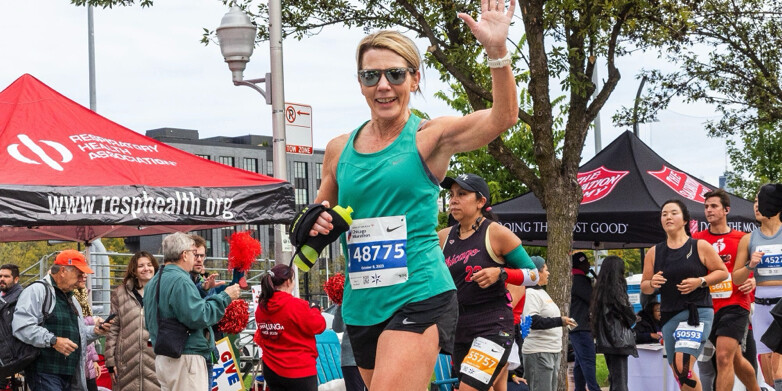
I had zero running gear and only knew how far a run was by tracking the miles when I drove the same route in my car. He loves to tell the story that after a few weeks of my run/walk training, I came home elated that I had run from the school near our home to our neighborhood without walking or stopping. I was so proud of myself. Only much later did I realize that was less than a quarter of a mile!
Soon after, I crossed the finish line of that first race, signed up for my next, and have been running ever since—19 years! I used the Jeff Galloway training schedule for beginners to run that first half marathon.
After that, for many years, I would run two half marathons in the spring and two in the fall and signed up for many 5Ks and 10Ks in between. The first few years, when my kids were young, most of my runs were local. As the years went by, I started combining my love of travel with my love of running. Some of my favorite United States races include the Oregon Wine Country Half Marathon and Nashville Rock n’ Roll.
In 2018, I joined the Seven Continent Club and have run half marathons in Australia, Iceland, Patagonia, Antarctica, and many in the States. I have Africa and Asia planned for 2025 and 2026. If all goes as planned, I’ll complete the seven continents when I turn 60.
After more than 70 half marathons, I decided to train for a full and since fall 2019, I have completed eight full marathons.
A friend once told me that he sets three goals each year—one personal, one professional, and one health. I decided to do the same, and this habit is the reason for so many positive things I’ve done in my life, including earning my MBA, becoming a business owner, and saying yes to my husband when he suggested training for that first half marathon many years ago.
In 2012, I joined Girl Scouts of Eastern Missouri as their chief operating officer and then CEO. I am honored to now serve as the national CEO for Girl Scouts of the USA. Running plays an important role in my professional life as training for a race requires strategy, discipline, and accountability—so does leading an organization. I come up with some of my best ideas on long runs. I think my team rolls their eyes when I have a 20-miler—they probably wonder what ideas I might come back with.
I want our Girl Scouts to find what they enjoy most that best supports their mental, physical, and emotional health. Many of our Girl Scout councils sponsor their own run/walks. I love to see our girls introduced to running through these events.
I now run three to four times a week, cross-train two days a week, and have one day of rest. As soon as I finish one training schedule, I move to the next.
Running has changed my life—the people I’ve met, the goals I’ve achieved, the places I’ve seen—all made possible because of that simple question: “Wouldn’t it be fun to do a half marathon together?” I know I am stronger physically, mentally, and emotionally because of running.These tips have made my running journey a success:
1. Go for just one mile
This habit has served me well so many times when I don’t really feel like going out—especially when it’s too hot, too cold, too windy, too hilly, too late, too early. Just tell yourself “I can run one mile!” It rarely ends up being only one mile!
2. Track your runs
With all the amazing apps out there, I still print my running schedule, I highlight each completed run. The feeling of accomplishment is the motivation for the next day.
3. Support yourself
Positive self-talk is important. Whether it was the best run/race or not so good, own the fact that you showed up. I’m a personal fan of the sign I see at races that says, “Be proud! You’re out here!” And, when you fall off your schedule, don’t throw in the towel until the next week, the next month, or the next race—pick it up the next day.
4. Know it’s never too late
Finally, there’s no time limit on when to begin! Pick your distance and find a training plan. There are fabulous training schedules and wonderful training groups out there. Do your research, choose what works for you, and just start.
(06/02/2024) ⚡AMPby Runner’s World
Keira D'Amato wins Run for Women
Keira D'Amato of Richmond, Va. led from start to finish to win the 46th Delightful Run for Women on Saturday morning in Albany.
D'Amato, former American record-holder in the marathon and half-marathon, prevailed in a time of 15 minutes, 41 seconds on the 5-kilometer course that begins and ends on Washington Avenue next to the state Capitol.
D'Amato held off a late challenge from Amy Davis-Green of Madison, Wis., who came in second in 15:45, followed by Jessie Cardin of Sutton, Mass. in third at 15:51. Davis-Green and Cardin are teammates with the Hansons-Brooks Original Distance Project.

Freihofer’s Run for WomenTop finishers
1. Keira D’Amato, 15:41
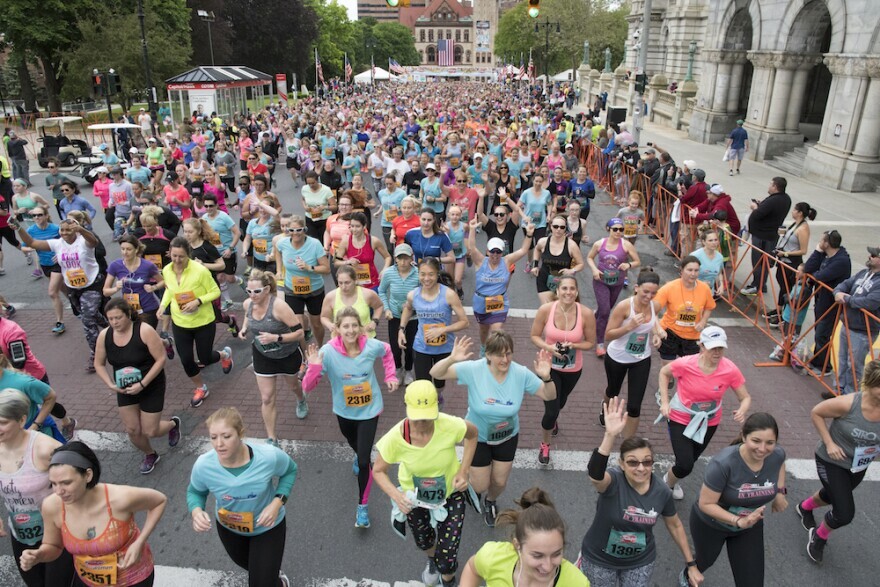
2. Amy Davis-Green, 15:45
3. Jessie Cardin, 15:51
4. Anne-Marie Blaney, 15:57
5. Regan Rome, 16:39
6. Whitney Macon, 16:47
7. Emma Eastman, 16:54
8. Annmarie Tuxbury, 17:00
9. Kathryn Munks, 17:02
10. Amanda Chambers, 17:30
Masters division (40 & over)
1. Sascha Scott, 19:04
2. Meg Versteegen, 19:13
3. Margaret McMahon, 19:38
(06/01/2024) ⚡AMPby Mark Singelais
Freihofer's Run For Women
Freihofer's, a leading baker of wholesome products, is committed to fostering the growth and recognition of women in sports and inspiring all generations of women to experience the benefits of exercise and good nutrition. That's why we're proud to sponsor the annual Freihofer's Run for Women 5K -- one of the world's largest and most prestigious all-female road races. TheRace...
more...Double Kenyan victory at the Stockholm marathon
On Saturday, the classic Stockholm marathon ran for the 45th time - and then it was a double Kenyan victory.

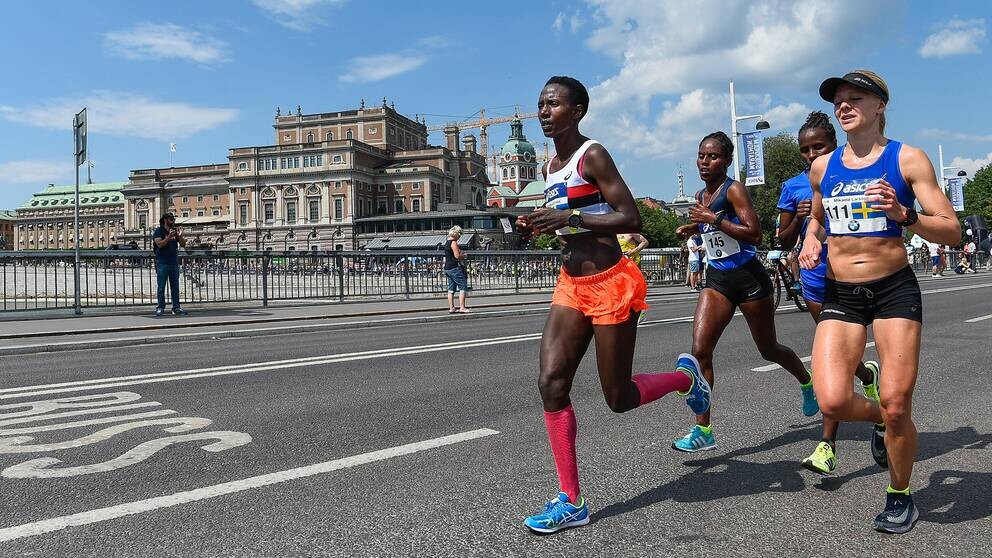
Fredrick Kibii was first to finish on the men's side in 02.14.17 and on the women's side Marion Kibor finished in 02.31.46 to complete the double.
First Swede in the finish line and SM winner on the men's side was Ebba Tulu Chala, and SM gold on the women's side went to Carolina Wikström.
(06/01/2024) ⚡AMPADIDAS Stockholm Marathon
ASICS Stockholm Marathon is an exciting race in a beautiful city with runners from all over the world. This is one of the major sporting events in Sweden with hundreds of thousands of spectators along the route cheering the participants. The race takes you through Stockholm, one of the world’s most beautiful capitals. Built on 14 islands around one of...
more...Brian Komen promises to deliver 1500m medal at Paris 2024 Olympics
In his bid to stop Norwegian and British dominance in the 1500m, Brian Komen has promised to deliver a medal for Kenya at the Paris 2024 Olympic Games.
African Games 1500m champion Brian Komen has promised to deliver a medal for Kenya if he makes the cut to the Paris 2024 Olympic Games.
Komen, the latest 1500m runner to emerge from Kenya, has managed to cement his name and track and field fans cannot wait to see what the athlete is capable of as he gears up to take on the creme de la creme of track and field this season.

The Kip Keino Classic champion has been in great shape so far, crediting all his wins to training well and working hard. Many might wonder where he has been following the faulty performances from Team Kenya in the 1500m.
“I was in school, now I’m back and I’ve been training very hard and that’s why I’m here. I was studying at Egerton University pursuing a course in Microbiology," Komen said.

“When I feel like I want to go, I just decide to go all in. I feel like my body is doing okay and I’ve been training very hard. I can’t say I’m going to win a gold but God knows that. I’m going to fight for a medal, that’s my goal.
“I’m focusing on Paris and I want to win a medal and if I manage to win gold, that’s well and good. My coach used to run and he really motivates me."
The 25-year-old has been unbeaten in the 1500m so far this season, starting from the African Games where took gold before dominating the Kip Keino Classic.
He was also in action at the Diamond League Meeting in Doha, making his long-awaited debut, and managed to stun the world once again with his tactical run. Komen later stole the show at the National Championships, owing to the fact that it was his first time competing there.
(06/01/2024) ⚡AMPby Abigael Wuafula
Paris 2024 Olympic Games
For this historic event, the City of Light is thinking big! Visitors will be able to watch events at top sporting venues in Paris and the Paris region, as well as at emblematic monuments in the capital visited by several millions of tourists each year. The promise of exceptional moments to experience in an exceptional setting! A great way to...
more...He’s Running 900 Miles to Every Premier League Soccer Stadium for Suicide Prevention
When Matthew Smith was a child, he lost his brother to suicide. Now he’s running throughout England to raise money for mental health services in a region that has the highest rates of suicide in the entire country.
Matthew Smith was only 10 years old when he lost his brother, Daniel O’Hare, to suicide. Daniel was 19 and had no history of mental health problems, nor had he shown any outward signs of his intention to end his life. His family was devastated by the sudden and unexpected loss, and they are still struggling to understand his choice.

Now 29, Smith is an advocate for mental health, and he’s on a mission to run 900 miles to every Premier League stadium in England to raise money for the region’s services. The northeast region, where Smith lives, has the highest rate of suicides in the country, and he and his supporters are determined to change that. He plans to take on this ultrarunning challenge in his brother’s honor in August, and he has the goal of raising £135,000 ($171,882) and spreading awareness of suicide prevention. He told Chronicle Live that along the way, he’ll be delivering the message that “it’s okay to not be okay,” and that there is “always a way.”
After losing Daniel in 2005, Smith and his younger brother and cousin started a nonprofit in his memory called If U Care Share, because they wanted to do something positive and prevent other families from going through the same kind of loss. They sold wristbands at soccer clubs that said “if u care share,” and raised over £50,000 ($63,655) for mental health charities.
In 2011, the charity was officially registered with three main objectives: prevention, intervention, and support for survivors of suicide loss. For more than a decade, If U Care Share has offered support to people who have lost loved ones to suicide and provided advice and assistance to people who are at risk of killing themselves.
Two years ago, Smith ran 250 miles from the charity’s headquarters in northern England to Downing Street in London to hand deliver a letter asking the U.K. government to include suicide prevention in the Levelling Up White Paper, a moral, social, and economic program.
This latest initiative came about because of Smith and his If U Care Share colleagues’ love of soccer and longstanding partnerships with the Premier League, the League Football Education, and the Women’s Super League.
“It’s no secret that suicide prevention and mental health services have struggled recently due to significant funding restrictions, so I can’t thank everyone enough for believing in the charity, our mission, and myself,” Smith told Chronicle Live. “The money raised at the launch event will not only enable the challenge to go ahead, it will also save lives, support communities, and prevent suicide in a region that needs our help more than ever.”
(06/01/2024) ⚡AMPby Runner’s World
Have an Upcoming Race? You Don’t Need To Run the Full Distance During Your Training (Seriously)
I’d been her go-to person for running advice and positive reinforcement during her training block. She didn’t really need me— she was crushing her long runs and felt good about the progress she had made, so her frantic call was unexpected. I asked what was wrong.
“Well, I felt like I needed to do the full 13.1 miles,” she said. “So I did. Now my butt hurts.”

How long should long runs actually be when training for a race? Well, we'd talked about how most training plans didn’t go up to the full race distance and that it was by design. There was no need to go over 10 miles to have the fitness necessary to complete the half marathon.
Christine Conti, running coach and fitness specialist
Katherine Campbell, CPT, DPT, physical therapist, personal trainer, and running coach
So why did my friend go totally against her plan and all practical advice? Her reason: “Just to make sure I could.”
Christine Conti, a running coach and fitness specialist, is familiar with the need to instill confidence in runners throughout the training process and recognizes the fear first-time racers face.
“They're doing their training and they really believe that if they don't try it first, they'll never make it,” she says. “And we're told in life, ‘practice, practice, practice.’ You don't want the first time you do something to be the big show, right? But you really shouldn’t do it.”
When I think back to my first half marathon, I remember the doubt and fear. How can you know you can reach the finish line if your longest long run is only 10 miles?
Well, good news: There's proof you can finish a race without running the full distance first, so you don’t have to try it—and you can avoid a literal pain in the butt.
Why don’t training plans go the full race distance?
Contrary to popular belief, most training plans are designed to go just short of the full mileage of the race you're running, according to Katherine Campbell, CPT, DPT, a physical therapist, personal trainer, and running coach.
“Typically most general half marathon plans only go to 10 to 11 miles because they're made for beginners,” Campbell says. “As a beginner or even intermediate runner, you want to make sure you're recovering enough from your long runs where you can get the aerobic benefits without actually putting too much load through your musculoskeletal system to cause injury.”
This is the same reason your marathon training plan usually only goes up to a 20-mile long run—not the full 26.2 miles.
A more advanced half marathon training plan can go above 13 miles—sometimes up to 16 miles. But the thing is, many runners using this type of plan are faster than beginners who are sometimes running a double-digit-mile long run for the first time and should be conservative with their pace.
“Running faster paces would equal out to the same time on feet as most beginners running 10 to 11 miles,” Campbell says.
That’s the key: time on your feet. Especially when it comes to marathon training where slower runners could potentially be slogging through long runs for hours.
“Anything after a three-hour long run doesn't have a drastic aerobic benefit, but it does drastically increase your risk of injury,” Campbell says. “As a physical therapist and coach, I will usually cut runners off at about 3.5 hours as a peak long run. A typical ‘average’ pace is usually around a 10-minute mile, and 3.5 hours at that pace is usually 20 miles.”
Half marathoners could go up to 13 miles in under three hours, but every mile out there while you’re tired is a chance for your form to break down. Unless you have excelled in your base training and have already tackled seven miles for your long run, it’s not worth going above 10 or 11 miles for your longest long run.
What's the risk of running the full distance before the race?
The more you’re running on tired legs after a log training block, you might subject yourself to overtraining.
“Running a full distance before the race dramatically increases your risk for injury,” Campbell says.
In addition to sore and tired muscles, there are other systems in your body that go a little haywire following 26.2 miles. Your cardiovascular system is amped, your kidneys are working overtime to filter waste from your blood during and after your marathon, and your immune system weakens in the hours following such a long distance.
“There's so much happening on a physiological and musculoskeletal level that if you ran more than 26 miles before the race, you're risking not giving yourself enough time to recover to actually perform on race day,” she says.
You must tell your brain to stop doubting the structure of the plan, according to Conti.
“Beginners might look at these training plans without understanding the science behind it,” she says.
A well-made plan—meaning one made for you by a coach or designed by an expert—will bring you up to your physiological edge to help prepare your body for the aerobic challenge of a long distance and then back off just before race day.
What is ‘tapering’—and how will this strategy help you run your full race distance?
The point is you don’t want to be out on the road for too long lest you get hurt or sick. You might be wondering w
During the taper phase in half marathon and marathon training, your body recovers from the high demand of the training weeks before. By reducing training volume and intensity in the weeks leading up to the race, tapering alleviates accumulated fatigue, repairs muscle damage, and replenishes energy stores. Because you're racing on healed legs, you’re less likely to face injury.
“A nice taper two to three weeks before the race will make your legs fresh,” Campbell says. “Trust that the training, optimal recovery, and fresh legs will get you there.”
How to embrace the unknown of the last few miles
So you don’t want to get hurt. You don’t want to get sick. You’ve decided to follow your plan and have vowed not to go the full distance. But you’re still nervous. Mentally, how should you deal in the weeks leading up to the race?
It’s about trusting yourself and the training you’ve already done. As many old-school coaches will say, “The hay is in the barn.”
“I remind my clients that you should be looking at the amount of miles you run per week,” Campbell says. “You've trained your body to run the distance if you have been averaging over 26 miles per week for a marathon and 12 miles per week for a half marathon.”
If you can convince yourself that you’re physically prepared, you’re mind should settle down.
“For me, my first marathon was a bucket list item. I thought the people who ran these races were superhuman. I had no idea your body could actually run or perform for that amount of time without dying. But I trusted that if I followed the plan, I would do it.”
For her first half marathon, Conti never ran more than a nine-mile long run.
How to mentally preparing for the final stretch of your race
There are some tricks to help the last miles fly by. First, ask other runners about their experiences in the last couple miles of a race. For me, the last two miles of my first half marathon were exhilarating. I celebrated each step I took after the 11-mile mark because every step represented the farthest distance I had run in my life.
My first marathon was a little different. The last three miles were a total pain cave, but there was no freaking way I was going to give up. You’ll feel the same way.
Aside from sheer determination, here are other tactics to pull you to the finish:
1. Use the crowd
At big races, crowds will line the street leading up to the finish. Their cheering will create an electric atmosphere.
“A fun tip I like to give my runners is to have your friends and family scattered throughout the last few miles to give you that extra energy boost, too,” Campbell says.
2. Break up the distance
You might be doing this throughout the race, but it’s especially useful in the last few miles.
“It’s all mental,” Conti says. “Think about it like, ‘Oh my gosh, all I have is a 5K left. I've done this a million times.’ Or ‘I have six miles. That’s two 5Ks. That’s easy.” You're almost done. And if you have to give yourself some grace and walk a little bit, you're still going to make it. You're going to be fine.”
3. Repeat a mantra
Both Conti and Campbell say mantras are a proven way to keep your mind right as you go into the last miles of a race.
“I am all about mantras,” Campbell says. “Find one, practice it, and keep saying it.”
Campbell also suggests writing down one win each week throughout your entire training cycle.
“Read all of them and come up with three positive reasons before your race that remind you that you're prepared for the race,” she says.
(06/01/2024) ⚡AMPWhy the "Norwegian Method" Training Craze Is Here to Stay
In a highly anticipated race at the 2024 Prefontaine Classic, Jakob Ingebrigsten pitted his revolutionary "Norwegian method" of training against some of the best milers in the world.
The “Mile of the Century”—of the twentieth century, that is—was a duel between John Landy and Roger Bannister at the 1954 Empire Games in Victoria. The two men were, at the time, the only two sub-four-minute milers in the world: Bannister had beaten Landy to the punch by 46 days, but Landy was the reigning world record holder. Their end-of-season clash was as heavily anticipated as any heavyweight boxing duel. Landy led until the final bend, at which point he famously glanced over his left shoulder at precisely the moment that Bannister surged past on his right.

The mile of the current century, at least in terms of pre-race hype and intriguing storylines, took place on Saturday at the Prefontaine Classic track meet in Eugene. It was a gigantic multidimensional grudge match between Jakob Ingebrigsten, the blunt-speaking Norwegian wunderkind who won the 2021 Olympics at the tender age of 20 and whose training methods have sparked wholesale upheaval in the endurance world, and almost every runner who has beaten him or come close to it in recent years—most notably Josh Kerr, the Scotsman who upset him at last summer’s World Championships and has been engaged in an increasingly testy war of words with him ever since.
What gave the race an extra layer of significance, beyond the usual battle for personal supremacy, was that clash of training ideas. Ingebrigtsen is the foremost exponent of what has come to be known as the “Norwegian method” of endurance training. Its hallmark is carefully controlled workout intensities, pushing just hard enough to stimulate adaptation without incurring fatigue that would compromise the next workout. In Ingebrigtsen’s hands, that involves twice-a-week double threshold sessions: workouts like ten times a kilometer with one minute recovery in the morning and evening, with regular ear pricks to check lactate levels and keep the intensity in the right zone, on Tuesdays and Thursdays.
A similar approach has also taken Norwegians to the top of the podium in other sports like triathlon and cross-country skiing, and athletes from other countries have begun emulating it. Norwegian-style training is “the big, sexy thing,” as U.S. miler Hobbs Kessler put it. It might even be “the next step in the evolution of distance running training,” as a group of sports scientists suggested in an academic paper last year (which I wrote about here). It’s very hard to do controlled studies of entire training philosophies, as opposed to specific workouts. So the best litmus test, I suggested, would be clashes on the track leading up to the Paris Olympics. Saturday in Eugene was the first such test.

Sexy new things don’t stay sexy and new forever, and it’s fair to say that some of the shine of Norwegian training has worn off since last year. The most notable reputational hit was Kerr’s 1,500-meter win at last summer’s World Championships, kicking past Ingebrigtsen in the final lap after the Norwegian had led most of the race. One loss could be blamed on bad luck, but that made three times in a row: another Scottish runner, Jake Wightman, had outkicked Ingebrigtsen in strikingly similar fashion at the 2022 World Championships, and Ethiopian star Samuel Tefera did the same at the 2022 World Indoor Championships. That starts to look like a systemic flaw in the training approach. While Ingebrigtsen was carefully monitoring his moderate-intensity threshold intervals, Kerr and Wightman and Tefera were presumably ripping off all-out sprints—and they had a racing gear that he seemed to lack.
In Eugene, a rabbit led the field through a quick first half-mile. When he stepped off, it was Kenyan runner Abel Kipsang who pushed onward, with Ingebrigtsen following patiently behind. This was already a surprise: Ingebrigtsen is usually the one pushing the pace. Then, with a lap and a half still remaining, it was the fast finisher Kerr who surged into the lead and made an early bid for victory. Each man, it seemed, was playing the other’s game. The last lap ticked by in slow motion, Kerr unable to pull away and Ingebrigtsen unable to close the gap. That’s how it finished: Kerr in 3:45.34, Ingebrigtsen in 3:45.60, and then seven more men under the once-impregnable 3:50 barrier. In 11th place was Cam Myers, a 17-year-old from Australia, with a time of 3:50.15—two seconds faster than Ingebrigtsen himself ran at Pre as a 17-year-old in 2018.
It would be as foolish to give up on Norwegian training based on a few individual losses as it would be to anoint it the “next step” on the basis of a few individual wins. But if Ingebrigtsen keeps losing, that’s going to reinforce doubts about whether his approach is as effective for head-to-head racing as it is for time trials. There are plenty of caveats: for example, an Achilles injury disrupted Ingebrigtsen’s training for several months over the winter. But there are also other questions. What has happened to his older brothers Henrik and Filip? Both were world-class milers in their own right, but both have been struggling in recent years, as have other prominent Norwegian athletes like Olympic triathlon champion Kristian Blummenfeld, raising questions about the sustainability of the Norwegian approach.
And then there’s the fact that, despite all the hype about the mile, the real marquee event at Pre turned out to be the women’s 10,000 meters, where Kenya’s Beatrice Chebet became the first woman to dip under 29 minutes with a world-record clocking of 28:54.14. Kenyan runners (and their Ethiopian rivals) have been at the top for so long that it’s easy to take their dominance for granted. When I was in college in the 1990s, we were all fascinated by “the Kenyan Way.” That was the subtitle of Toby Tanser’s 1997 book, Train Hard, Win Easy. The secret, of course, was that there was no secret. There was a famous (and almost certainly apocryphal) anecdote about a Kenyan coach who was asked what separated his top runners from the merely good ones. All of them had grown up running to and from school each day, he explained; the champions also went home for lunch.
Part of the current fascination with the Norwegian training method is the suggestion that there is, in fact, a secret—a quantifiable formula, expressed in milimoles per liter of lactate in your blood, to optimize your training, rather than simply an admonition to work hard. But that’s a reductive view of what Ingebrigtsen and his Nordic peers are aiming for. The underlying philosophy of Norwegian training is that a harder workout isn’t always a better one, because it will take too long to recover from. This is hardly a new insight, but in the great merry-go-round of training fads, it was perhaps overdue for a resurgence.
In fact, the original Mile of the Century had a similar subtext. Bannister was the light-training amateur who ran on his lunch hour; Landy was a workout hero with “an insatiable appetite for interval running,” as Bannister wrote. “The great contrast in our training methods was not lost of the Press.” Bannister won the race, but it’s Landy’s training approach that proved to be more influential on subsequent generations. As Ingebrigtsen’s final showdown with his rivals in Paris looms, that’s worth remembering: even if he loses, and even if we decide that lactate meters are unnecessarily complicated, we might still have something to learn from his unorthodox training.
(06/01/2024) ⚡AMPby Outside Online
A champions diet! Sha'Carri Richardson reveals her favorite go to meal for breakfast
Sha'Carri Richardson has shared the best meal she prefers having for breakfast mostly on race day.
Reigning world 100m champion Sha’Carri Richardson has disclosed her go to breakfast meal when preparing for major races.
The world’s fastest woman in 2023 told Eating Well that she is certainly a foodie and she loves trying out different meals but she never goes back to eating what she doesn’t like.

Speaking of her typical breakfast, the American noted that it depends on timing but she spoke of her love affair with eggs on race day or any regular day.
She recently signed an ambassadorial deal with the Oikos Pro Drink and she seems to be loving it already since she emphasised that she on days when she doesn’t feel the need to have heavy breakfast, she usually goes for the drink.

“I'm a big foodie. I like to eat a little bit of everything when it comes to food. I like to try everything at once—no, I may not eat it again if I don't like it, but I'm very open to trying any type of food once before cancelling it out.
“I would say in the morning, it depends on timing and if I have time to get up and make something, but I definitely am a big fan of eggs. Eggs are something I really like to eat in the morning on race day or any regular day.
“And when I'm on the go and I don't want something too heavy starting the day, I definitely like my Oikos Pro Drink that contains 23 grams of protein.
“That is something convenient that I like to include. I'm able to drink it really quick and I do still feel like I'm putting the nutrients in my body that I can have going into practice on a day-to-day basis,” she said.
Richardson added that after training or a race, she usually prefers ice bathing or getting into a hot tub to decompress from the long day.
“I would say recovery has just been being attentive to doing my ice bathing or hot tub, as well as just decompressing from the day later on in the evening.
“It's something I like to do. I'll be talking to my family or getting in the pool doing some stretching and some abs. That’s how the day ends for me,” she said.
Speaking of her favourite snacks, the 24-year-old said: “I like dried fruits a lot, specifically dried mangoes, as well as peanuts and almonds. I keep it very light and straightforward when it comes to snacking.”
(05/31/2024) ⚡AMPby Abigael Wuafula
How to get back into speedwork after your half-marathon
Well, you’ve done it—you’ve completed a half-marathon! After a well-deserved few days or a week off, you’re probably already planning your next race. While it’s good to be enthusiastic, stepping back into speedwork after a half-marathon can be tricky. It’s crucial to ensure you’re doing the right workouts to avoid injury or overtraining.
Let your body recover
After running a half-marathon, it’s essential to give your body adequate time to recover. The amount of recovery time varies among runners, but at least one or two days off all exercise is recommended, regardless of whether you are a beginner or a seasoned veteran. For runners coming off their first half, it could take at least a week to fully recover. Pay attention to any lingering soreness or fatigue. If you’re still feeling sore or overly tired, extend your recovery period for a few more days.

Ease back into things
The easiest way to get injured is by overdoing an activity while your body is still sore. When it’s time to begin running again, start with a gradual re-introduction. Begin with short, easy runs, maybe every other day, and slowly increase the distance and intensity. This is the best and safest way to regain your fitness so you can resume your regular weekly programming. If you feel you’re losing fitness but aren’t ready to start running yet, activities like swimming, cycling, brisk walking or yoga can help you build strength and endurance while aiding in recovery.

Before you begin your first couple of speed sessions post-race, you’ll want to have built your weekly mileage back up to around 40-50 per cent of your regular training load. For most runners, this can take two to four weeks. Doing this also builds up your aerobic endurance, providing a solid base for when you resume speedwork. After a week or so of running post-half-marathon, start incorporating strides into the end of your easy runs. Strides are short, controlled (20-30 seconds) bursts of speed that help re-introduce your legs to faster paces without the intensity of a full speed workout.
Start small
As tempting as it might be to immediately pick up where you left off with speed workouts, starting with shorter, interval-based sessions is the easiest and most effective way to re-introduce speedwork into your training. You can gradually increase the duration and intensity as you progress.
Here are some easy interval sessions to get your body acclimated to speedwork again.
five reps of 2 mins @ 10K pace with 90 seconds jog rest.
three reps of 1K @ half-marathon pace with two minutes rest
8-10 reps of 30 seconds on, 60 seconds jog.
(05/31/2024) ⚡AMPby Marley Dickinson
Is Beatrice Chebet Kenya's best bet for double gold at Paris Olympics?
With Olympic glory beckoning, is Beatrice Chebet Kenya's smart bet for double gold?
Two-time World cross country champion Beatrice Chebet is one of the Kenyan long-distance runners who are always known to show up when it matters and she stunned the whole world this past weekend with her world record.
Chebet, the world 5000m bronze medallist, competing in her second 10,000m event since she started her career, became the first woman in history to run under 29 minutes over the 25-lap race.

The 24-year-old stopped the clock at 28:54.14 to shatter Letesenbet Gidey’s world record time and automatically earn herself a spot in the women’s 10,000m team to the Paris 2024 Olympics where she has expressed interest in doubling in the 5000m and 10,000m.
After her world record feat at the Prefontaine Classic, the Diamond League Meeting in Eugene, Chebet said: “I came to run the 10,000m in order to get qualification and a great position for Paris because I want to double. I’m happy because it’s my first time to be on an Olympic team and with good health and hard work, I will medal again in Paris and that will be my favourite medal.”

The former world silver medallist will be making her debut at the Olympics and as far as things stand, she might just be the surprise winner in the two distances.
She has been in impeccable form this season, following her world record on the New Year’s Eve at the Cursa dels Nassos where she clocked an impressive 14:13 in the 5km road race.
The Commonwealth Games 5000m champion then proceeded to successfully defend her cross-country title in Belgrade, Serbia going up against a strong field that included world 10km record holder Agnes Jebet and Sirikwa Classic Cross-Country champion Emmaculate Anyango.
She opened her track season at the Diamond League Meeting in Doha, Qatar, flooring a strong Ethiopian contingent to win the women’s 5000m race. So far this season, it is evident that Chebet is a strong contender for the top prizes in Paris and no one is going to stop her.
Double world record holder Faith Kipyegon is yet to open her season following a slight injury setback and she might pose as Chebet’s closest challenger, but until then, the National Police Officer is in the right shape to carry the day in the city of love.
(05/31/2024) ⚡AMPby Abigael Wuafula
Paris 2024 Olympic Games
For this historic event, the City of Light is thinking big! Visitors will be able to watch events at top sporting venues in Paris and the Paris region, as well as at emblematic monuments in the capital visited by several millions of tourists each year. The promise of exceptional moments to experience in an exceptional setting! A great way to...
more...Timothy Cheruiyot shares key reason why he loves competing against Jakob Ingebrigtsen
Timothy Cheruiyot has explained why he loves running against his track rivals, singling out Jakob Ingebrigtsen as one of his favourite.
Former world 1500m champion Timothy Cheruiyot has opened up for his love competing against track rival Jakob Ingebrigtsen.
Cheruiyot and Ingebrigtsen were in action at the Diamond League Meeting in Oslo, where they went head-to-head to the finish line with the Norwegian middle-distance runner dramatically diving over the line to take the top prize.

The two-time world 5000m champion crossed the line in a world leading time of 3:29.74 ahead of Cheruiyot who came in close second in 3:29.77. Frenchman Azeddine Habz sealed the podium, clocking an astonishing season best time of 3:30.80 to cross the finish line.
Cheruiyot, the Olympic Games silver medallist, noted that he loves competing against talented athletes like Ingebrigtsen who usually push him to the limit. Going into Oslo, Cheruiyot had high expectations to win the race but expressed satisfaction with his second-place finish.

He has been out with an injury bout but is slowly coming back to competing and will certainly be a force to reckon with.
“Racing with my compatriot, Jakob - it makes me happy, he's a strong guy and he finished fast today. I'm glad to be here in Oslo for the second time, the track is amazing.
“I was expecting the win but I'm satisfied I managed to run under 3:30 today. Now, I'm going home to prepare for the Kenyan trials - I need to finish in the top three.
“For the last nine months, I've been injured so I need to focus on training more to improve my fitness ahead of Paris, where I hope to get another medal for my country,” Cheruiyot said.
He opened his season with a second-place finish at the Diamond League Meeting in Doha before doubling in the 1500m and 800m at the National Championships.
(05/31/2024) ⚡AMPby Abigael Wuafula
High school girls are clocking some very fast miles this season
Never before has a national high school record been broken in back-to-back races.
Well, until Thursday May 30.

Just 10 minutes separated two historic efforts at the mile distance between high school girls at the Festival of Miles in St. Louis, Missouri, with Virginia native Allie Zealand getting things started under the lights with a time of 4:30.38.
However, it wasn't long before Ventura junior Sadie Engelhardt, whose own national record of 4:31.72 was broken by Zealand, got her own crack at it in the women's professional mile that followed.
Roughly 10 minutes later.
Engelhardt's patience was played to perfection, as she bided her time in the pack before working her way up over the last 200 meters and hitting for a 63-second final lap to score a new national record in 4:28.46.
Her finish only paled Jenn Randall's winning time of 4:28.23.
Engelhardt's performance was just 0.21 seconds shy of Mary Cain's longstanding overall national record of 4:28.25, which was set indoors in 2013.
Engelhardt put together laps of 68.9 over 409 meters, 68 seconds over the second 400 meter frame, 68.3 in the third quarter and 63.2 in the closing lap.
Zealand, meanwhile, went 69.23, 68.94, 67.38 and 64.81. Cuthbertson's Charlotte Bell was second in 4:35.70 while Allison Ince was third in 4:35.96.
Five girls finished under 4:40 and six more were under 4:50.
(05/30/2024) ⚡AMPAn amazing fast 5k in Oslo
OSLO, Norway (AP) — Hagos Gebrhiwet of Ethiopia ran the second-fastest 5,000 meters of all time in winning at the Diamond League meeting in Oslo on Thursday.
Gebrhiwet ran a final lap of 54.99 to finish in 12 minutes, 36.73 seconds — 1.37 seconds off the world record set by Olympic champion Joshua Cheptegei.

Gebrhiwet's time is not only the second fastest time ever it was also a new national record for Ethiopia. New personal bests for the top eight finishers and new National records for Guatemala, Switzerland, Sweden, France and South Africa!
Also at the Bislett Games, home favorite Jakob Ingebrigtsen dived for the line to win the men's 1,500 just ahead of Timothy Cheruiyot in a world-leading 3 minutes, 29.74 seconds.

More details: Hagos Gebrhiwet produced the standout performance of the Bislett Games – and one of the biggest surprises of the year so far – when winning the men’s 5000m in 12:36.73 at the Wanda Diamond League meeting in Oslo on Thursday (30).
It was one of three meeting records and five world leads set on an enthralling night of athletics action in the Norwegian capital, just two months away from the Paris Olympic Games.
Going into the men’s 5000m, many eyes were on world record-holder and Olympic champion Joshua Cheptegei, two-time world cross-country champion Jacob Kiplimo and last year’s Bislett Games winner Yomif Kejelcha. But Gebrhiwet – who produced the first sub-13-minute run of his career on this track as a teenager back in 2012 – ensured his name won’t be forgotten in the lead-up to the Olympics.
The early pace was strong but not spectacular as the field was paced through the first 1000m in 2:33.13 and 2000m in 5:07.05. Addisu Yihune maintained that tempo through 3000m, reached in 7:41.05, with all the big contenders still in contention.
Kejelcha took control soon after and started to wind up the pace. Gebrhiwet stayed close to his fellow Ethiopian with Ugandan duo Kiplimo and Cheptegei close behind as 4000m was reached in 10:11.86, the previous kilometre being covered in 2:30.
Cheptegei was unable to hold on for much longer and started to drift back. Kejelcha continued to drive the pace but the challenge from Gebrhiwet and Kiplimo wasn’t fading, despite the increase in pace. Gebrhiwet struck as the bell sounded and moved into the lead, kicking past his compatriot and pulling away with each stride.
With a final lap of 54.99, Gebrhiwet charged through the line in 12:36.73 to win by more than two seconds from Kejelcha (12.38.95) – the first time in history that two men have broken 12:40 in the same race.
Gebrhiwet’s winning time is just 1.37 seconds shy of the world record Cheptegei set in 2020 and moves him to second on the world all-time list, one place ahead of Kenenisa Bekele, whose Ethiopian record Gebrhiwet broke.
Kiplimo held on for third, setting a PB of 12:40.96, while Spain’s Thierry Ndikumwenayo (12:48.10) and Yihune (12:49.65) also finished inside 12:50.
It was just the second time in history that 13 men have broken 13 minutes. Along with Gebrhiwet, there were national records for Guatemala’s Luis Grijalva (12:50.58), Switzerland’s Dominic Lokinyomo Lobalu (12:50.90), Sweden’s Andreas Almgren (12:50.94), France’s Jimmy Gressier (12:54.97) and South Africa’s Adriaan Wildschutt (12:56.67).
“I’m really happy with my time,” said Gebrhiwet, the world road 5km champion. “I set a PB when I first ran in Oslo, and now it’s even better. The conditions and the crowd were great. It was a very fast race and it wasn’t easy for me, but it went very well. I’ll now try to qualify for the Olympics in the 10,000m too.”
There were notable performances in two other endurance events in Oslo.
Australia’s Georgia Griffith continued her breakthrough to win the 3000m in an Oceanian record of 8:24.20. The field had been paced through 1000m in 2:50.34, then that pace was maintained through 2000m in 5:40.73.
The field became more strung out over the final kilometre as the pace increased. Griffith made a break in the closing stages and Ethiopia’s Likina Amebaw tried to come back, but her challenge was in vain as the Australian won in a meeting record of 8:24.20, 0.09 ahead of Amebaw in a race where the top six women finished inside 8:30.
In the closing event of the night, Olympic champion Jakob Ingebrigtsen was made to dive for the line to ensure a home victory for the Norwegian fans.
He controlled the pace in the second half, but still had 2019 world champion Timothy Cheruiyot for company on the final lap. The Kenyan challenged the Norwegian down the home straight and appeared to have timed his kick to perfection, but Ingebrigtsen collapsed over the line to get the verdict in a world-leading 3:29.74, 0.03 ahead of Cheruiyot. The first 11 finishers all set either season’s or personal bests.
(05/30/2024) ⚡AMPMeet the 91 year-old competing in the Missoula Half Marathon
A few weeks ago, Missoula Marathon Director Trisha Drobek stopped by our offices to record a few on-air interviews regarding the upcoming race. Drobek provided some great advice on running the marathon that you can find below.
On a topic off-air, I mentioned to Drobek that I was running the Half Marathon (please hold your applause) with a good chance I'd finish dead last. Drobek chuckled and said I would be just fine at 28 compared to the 91-year-old competing in the race.
I HAD to track her down. Myrtle Miller at 91 years young is gearing up to participate in another Missoula Half Marathon. She began competing in the Half 12 years ago at the young age of 79 and has participated every year since, minus the COVID years.
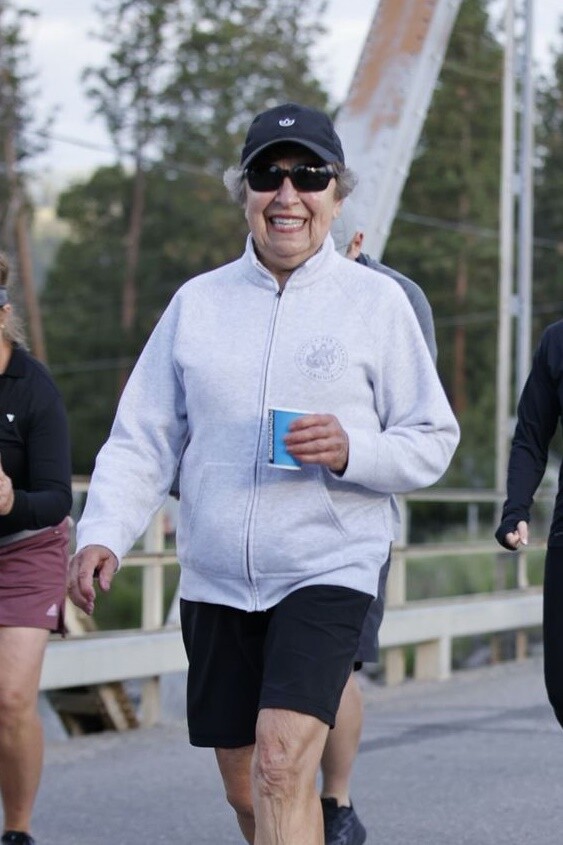
"The year before I saw two of my friends doing that [participating in the Half Marathon] and I thought 'Oh I want to do that too'" said Miller. "I was closer to do this type of thing," Myrtle explained after she and her husband moved into town.
Miller won't be alone at this year's Missoula Half Marathon on June 30th. She'll be joined by her son Brian.

"My son's done it with me every year. He's a runner, in fact, he's running a 30K down in Idaho or someplace, but he's walked with me every year."
Some people will never compete in a race setting over their entire life but not Myrtle. She relishes the opportunity every spring to get back out there.
"It's just a goal I have each spring. I think 'Oh, I want to do this again,' so it's just kind of a goal, you know? I know the beginning of March we start training."
Myrtle is a pro at this point. She knows her training route and she knows what it will take to tackle the Half Marathon. This year Myrtle is looking to complete the the 13.1 miles in 4 hours and 30 minutes.
"I think I did it in 4:15:00 last year, so I think it will be 4:30:00 this year. Looking back, I've been keeping track, looking back over the years each year I'm about 15 [minutes] to half an hour slower.
(05/30/2024) ⚡AMPby Ace Sauerwein
Missoula Marathon
Half and full marathon in Missoula, Montana, in the city they call "The Garden City." Amazing participation by the entire town and county. Front lawn hose squads cool down the runners en route. Lots of rest stations. The full marathon is a Boston qualifier. Runner's World rated the course as one of the best overall road races. ...
more...Timothy Cheruiyot outlines comeback strategy with main focus on Paris 2024 Olympics
Former world 1500m champion Timothy Cheruiyot has opened up on his comeback strategy after injuries almost threatened to end his career.
Olympic 1500m silver medalist Timothy Cheruiyot is slowly gaining his confidence as he outlines his comeback plan to where he feels he rightfully belongs, the top.
Cheruiyot suffered an injury bout that cost him since 2022 where he failed to defend his world title at the Oregon World Championships and also faltered at the 2023 World Championships in Budapest, Hungary.
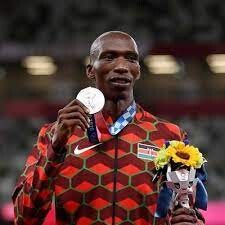
The former world champion is now plotting a great comeback and he has already started competing after his exit from the World Championships in Budapest.
He opened his season with a second-place finish at the Diamond League Meeting in Doha before doubling in the 1500m and 800m at the National Championships.

He now heads to the Diamond League Meeting in Oslo, where he will be up against a strong field, but he can’t be downplayed since he is also an able athlete.
Cheruiyot also disclosed that his main focus is on the Olympic trials where he intends to shine and go to Paris to improve his silver medal from the delayed 2021 Tokyo Olympic Games.
“I feel good…the races were good and I was well prepared. I decided to do two races, the 800m and 1500m, and it was really good because we are focusing ahead,” he said.
“I feel so great because last year I was having an injury but now I’m getting better. For now, I’m focusing on the Diamond League races and then the trials,” he said.
The Olympic silver medalist also noted that at the Diamond League Meeting in Doha, his body was about 85 per cent and fired warning shots at his opponents.
“At the Diamond League Meeting in Doha, my body was about 85 per cent because that was my first race after nine months, since Budapest. So, it was about gaining confidence and now, I’m ready to go. The confidence is coming back,” he added.
(05/30/2024) ⚡AMPby Abigael Wuafula
Walter Childs Memorial Race of Champions Marathon
America's 10th Oldest Marathon and the 19th Oldest Marathon in the World, this marathon provides runners with a challenging and rural course....
more...Relief for Comrades Marathon runners
The 97th Comrades Marathon — an up run — will be held over 85,91 km between Durban and Pietermaritzburg on June 9.
Runners will feel some relief after receiving a bit of respite from Comrades Marathon organizers, with another adjustment being made to the cut-off times for next week’s ultra-marathon in KwaZulu-Natal.
With cut-off times having caused some controversy after runners were alleged to have been taken off the course earlier than necessary at last year’s race, this latest move announced yesterday would give participants another 10 minutes to reach the last cut-off before the finish.
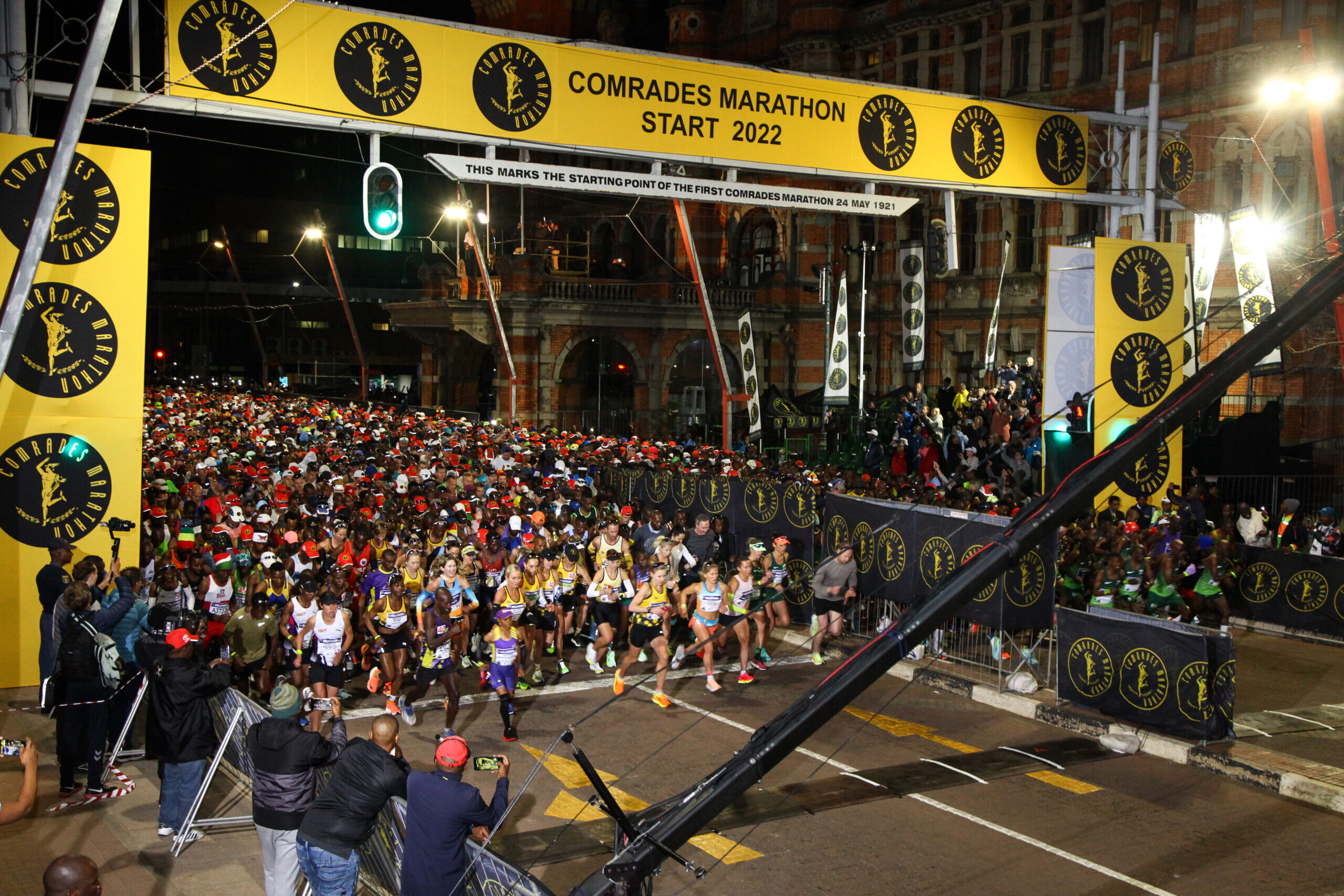
The cut-off at the 79,1-km mark, at the top of the notorious Polly Shortts climb, had been shifted from 11 hours 10 minutes (11:10:00) to 11:20:00, the Comrades Marathon Association (CMA) confirmed.
According to organizers, this was “in response to runner requests and ongoing efforts to ensure that participants have the best possible chance of finishing this year’s race”.

This latest announcement followed a decision by the CMA earlier this month to scrap the first cut-off point, at St Johns Avenue in Pinetown, reducing the total cut-off points to five, excluding the finish. Cut-off times were also revised for Winston Park and the halfway point at Drummond.
The 97th Comrades Marathon — an up run — will be held over 85,91 km between Durban and Pietermaritzburg on June 9.
Meanwhile, since 2015, the CMA has been awarding “Winners Jackets” to male and female winners of the race.
The year 2016 saw the retrospective awarding of Winners Jackets to three previous winners at the official Comrades race day prizegiving ceremony; with this becoming a celebratory facet to race week festivities until all surviving former Comrades Marathon winners have been honored with their very own Winners Jackets.
Two remarkable individuals will receive the grand acknowledgement at this year’s Comrades Champions Prizegiving Breakfast on Monday, June 10.
They are Rae Bischoff and Sipho Ngomane, both of whom in their own right have made their mark on The Ultimate Human Race.
In 1998 Bischoff made South Africa proud when she took the women’s title, a long break since 1993, when fellow South African Tilda Tearle was crowned the women’s champion.
Bischoff, a veteran contender during that up run, had Valentina Liakhova close on her heels, with a mere 19 seconds between them. But Bischoff managed to cross the finish line in 6:38:57, taking first position.
Ngomane ran his first Comrades Marathon in 2003. In 2005 — a down run — he surprised the world when he won in 5:27:11, with Oleg Kharitonov close behind.
What made the victory even sweeter is that Ngomane had to run in borrowed shoes after his had been stolen. He was only 23 at the time when he claimed the victory.
Comrades Marathon cut-off times:
Winston Park (Caltex Garage) – 29,6 km in, clock time 4:45:00
Drummond (Halfway) – 42,6 km in, clock time 6:20:00
Cato Ridge (N3 Subway) – 56,6 km in, clock time 8:10:00
Umlaas Road – 67,5 km in, clock time 9:40:00
Mkondeni (Top of Polly Shortts) – 79,1 km in, clock time 11:20:00
Finish line – 85,91 km in, clock time 12:00:00.
(05/30/2024) ⚡AMPby The Witness
Comrades Marathon
Arguably the greatest ultra marathon in the world where athletes come from all over the world to combine muscle and mental strength to conquer the approx 90kilometers between the cities of Pietermaritzburg and Durban, the event owes its beginnings to the vision of one man, World War I veteran Vic Clapham. A soldier, a dreamer, who had campaigned in East...
more...Lokedi, Kiplagat and Chepkirui Headline New York Mini 10K Run
Three Kenyans headlined by Boston Marathon second finisher Sharon Lokedi are among the top athletes entered for the 2024 New York Mini 10K set for Saturday, June 8.
Veteran and consistent Edna Kiplagat as well as Sheila Chepkirui, who finished second at the 2023 Berlin Marathon.

The race also features four past champions, five Paris 2024 Olympians, and seven of the top 10 finishers from the 2024 U.S. Olympic Marathon Trials.
Produced by the New York City-based nonprofit for more than five decades, the 52nd running of the event will also be competed by event-record holder and two-time race champion Senbere Teferi and two-time race champion Sara Hall, who will join the previously announced 2024 U.S. Olympic Women’s Marathon Team – Fiona O’Keeffe, Emily Sisson, and Dakotah Lindwurm – at the start line in Central Park.

Teferi, a two-time Olympian and two-time World Championships medalist from Ethiopia, has won the last two editions of the New York Mini 10K, breaking the event record in 2023 with a time of 30:12.
Also, in New York, she won 2019 UAE Healthy Kidney 10K and in her 2022 United Airlines NYC Half victory recorded the second-fastest time in the history of the event.
“I’m very happy to return to New York for the Mini, and I will try my best to win the race for a third time,” Teferi said. “It is such a special race because there is a bond that exists with thousands of women also running. Even though we are not related, I feel supported like we are all sisters in running.”
Hall is a 10-time U.S. national champion who won the New York Mini 10K in 2021 and 2022. Earlier this year, she finished fifth at the U.S. Olympic Marathon Trials. She is also the former national record-holder in the half marathon and the only athlete in history to have won the New York Mini 10K, New Balance 5th Avenue Mile, and Abbott Dash to the Finish Line 5K in New York.
“It’s very cool that this year’s New York Mini 10K falls on the fifth anniversary of my first win at the race, and I can’t think of any place I’d rather be that weekend,” said Hall.
(05/30/2024) ⚡AMPby Capital Sport
New York Mini 10K
Join us for the NYRR New York Mini 10K, a race just for women. This race was made for you! It’s the world’s original women-only road race, founded in 1972 and named for the miniskirt, and it empowers women of all ages and fitness levels to be active and to look and feel great on the run. Every woman who...
more...Four dynamic drills to finesse form and turnover
Mastering these simple drills will help you hit the sweet spot in your speed session.
Drills are the icing on the cake of a gentle, easy warmup pre-speedwork. Just like icing levels up your tasty treat to make it the best dessert it can be, tacking a few simple drills onto the end of your warmup sets your legs up to fire like never before, leading to a bigger improvement in performance and a more efficient workout. Try picking three drills to focus on, and feel free to do fewer repeats if these movements are new to you.

1.- High knees
Practising high knees helps us learn to lift our knees up when we run and emphasizes remaining light on our feet.
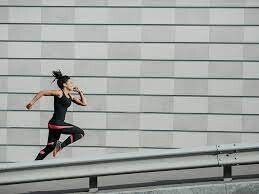
In this drill, focus on driving the foot down and letting it spring back up off the ground, instead of lifting it using the knees. Use the same arm motion during this drill as you use while running.
Work on keeping the upper half of your body leaning slightly forward (bend at the hips, but not crouching over), avoiding the urge to lean back while lifting your knees high. Forget speed in this drill—your aim is to stay tall and light on your feet, creating a quick vertical force, while moving forward. Try 3 sets of 15-20 seconds of high knees.
2.- Single-leg snap-downs
Running is a series of single-leg squats in a forward-moving direction, and any way you can improve co-ordination, balance and strength on one leg with help prevent injuries and maximize forward propulsion.
Begin by standing on both feet (if you feel balanced, come up onto your toes) with arms reaching above your head.
Once you find your balance, quickly drop onto one leg while pulling your arms down (into a running position) to create momentum. Release and begin again. Try 3 sets of 5 to 10 snap-downs on each side.
3.- Backward running
Backward running helps stretch hip flexors while activating hamstrings, and builds leg strength while minimizing stress, making it a useful tool when returning from injury.
It’s important to keep safety in mind when you add backward running to your routine, and to start with a walk, rather than a run. If you’re outside, opt for a large open area free of obstacles, and ask a forward-walking friend to serve as your eyes.
If you are walking backward on a treadmill, begin by holding the handrails and walking at a low speed. As you become more accustomed to going backward, you can steadily increase the speed setting until you’re safely and slowly running backward. A five to 10-minute backward walking or running session several times a week is enough to get started and can be easily tacked on to the beginning or end of your regular running session.
4.- A-skip
When doing the A-skip, pay attention to maintaining an upright posture and driving your arms forward, as when running. The idea is to skip while keeping knees high.
Practise in place by driving the knee up high above the hip and bringing it down fast. Once comfortable, a skip can be added in between steps.
While these drills are perfect to run through before a speed session, they can be slotted into the middle or end of an easy run. Remember to take a rest or easy running day after any harder workout or speed session.
(05/29/2024) ⚡AMPby Keeley Milne
World record holder, endurance sport pioneer Chris Nikic to Run 2024 Grandma’s Marathon
2-time ESPY award winner and Guiness world record holder Chris Nikic will be at the starting line of the 2024 Grandma’s Marathon, the organization announced today.
Nikic was born with Down syndrome and was unable to walk well until age 4, but recently he became the first person with Down Syndrome to complete each of the World Marathon Majors (New York City, Boston, Chicago, Berlin, London, and Tokyo) and earn the coveted Abbott Six Star medal.
In 2020, before completing any of his running-only marathons, Nikic became the first person in the world to ever complete an Ironman Triathlon – that competition consists of a 2.4-mile swim, 112-mile bike ride, and 26.2-mile run.

Nikic beat his own time two years later at the 2022 World Championships, and that mark of 16 hours, 31 minutes still stands as an official Guiness world record.
After accomplishing a goal that once seemed out-of-reach, Nikic co-wrote a book with his father, Nik, titled 1% Better: Reaching My Full Potential and How You Can Too.

The book chronicles Nikic’s journey from childhood to his teenage years, when after high school he was an admitted “overweight, out-of-shape” 18-year-old. As he slowly developed an affinity for exercise, Nikic also slowly changed his perception of what was possible in his life.
“That’s when he wrote on the wall that he was going to be a ‘world champ’,” his father Nik said. “We didn’t dismiss what he was telling us as impossible, we took it to heart and believed him. Then, we got to work helping him achieve that goal.”
Chris will speak at the Essentia Health Fitness Expo at 12:00 p.m. on Friday, June 21, and Nik will follow that at 1:00 p.m. as a guest for a panel discussion on the inclusion of neurodivergent and disabled athletes in endurance sporting events like Grandma’s Marathon. Both presentations are free and open to the public.
The Nikics will also be visiting Northwood Children’s Services west campus on Thursday, June 20, with Chris set to speak to the kids and lead them through the “1% Better Challenge.”
“We’re honored to have Chris as part of our 2024 Grandma’s Marathon weekend,” Marketing & Public Relations Director Zach Schneider said. “We met Chris and his dad two years ago in Denver, and I don’t think there was a dry eye in the place after Chris had given his presentation. He’s exactly the type of person we want at our starting line, and we’re excited to continue the conversation about how those doors can be opened to other athletes like Chris.”
Down syndrome is a chromosome disorder caused by an extra chromosome 21, which prompted the creation of the Runner 321 initiative aiming to welcome more neurodivergent athletes into endurance sports. On race day in Duluth, Chris will wear race bib No. 321 as a symbol of that initiative.
ABOUT GRANDMA’S MARATHON
Grandma’s Marathon began in 1977 when a group of local runners planned a scenic road race from Two Harbors to Duluth, Minnesota. After seeing just 150 participants that year, the race weekend has now grown into one of the largest in the United States and welcomes more than 20,000 participants for its three-race event each June.
The race got its name from the Duluth-based group of famous Grandma’s Restaurants, the first major sponsor of the marathon. In addition to the 26.2-mile race, the organization has now added the Garry Bjorklund Half Marathon and William A. Irvin 5K to its weekend offerings.
As the popularity of Grandma’s Marathon has grown, our mission has stayed the same – to organize, promote, and deliver annual events and programs that cultivate running, educational, social, and charitable opportunities to our communities.
(05/29/2024) ⚡AMPby Running USA
Grandmas Marathon
Grandma's Marathon began in 1977 when a group of local runners planned a scenic road race from Two Harbors to Duluth, Minnesota. There were just 150 participants that year, but organizers knew they had discovered something special. The marathon received its name from the Duluth-based group of famous Grandma's restaurants, its first major sponsor. The level of sponsorship with the...
more...Munyao to exploit underdog status in hunt for Olympic title
London Marathon champion Alexander Munyao says he will exploit his underdog status in the hunt for the men’s marathon title at the Paris Olympic Games.
Two-time Olympic Marathon champion Eliud Kipchoge and Ethiopian great Kenenisa Bekele are front runners.
The duo have won numerous championships and major marathons while Munyao only has last month's London Marathon title to boast of.

Tokyo Marathon champion Benson Kipruto will be the other Kenyan athlete in the race. But undaunted by the challenge, Munyao is determined to pull off a surprise in the French capital.
“I’m targeting nothing less than gold in Paris. I know Kipchoge will be chasing his third Olympic title and Kipruto is an equally serious contender but I’m ready for the challenge,” Munyao stated.

The London Marathon London Marathon champion envisions a Kenyan sweep on the podium and expects the trio to push each other to victory.
“A Kenya 1-2-3 finish is very possible. We’ll be pushing each other hard, and I believe Kenya will dominate in Paris,” he added.
Beyond winning gold, Munyao is keen to lower his personal best (PB). “I aim to reduce my PB to 2:01 or 2:02,” he added.
The 27-year-old boasts a PB of 2:03:11 set in December 2023 during the Valencia Marathon, where he placed second.
Last week, the Ethiopian Athletics Federation announced its three male representatives for Paris, headlined by three-time Olympic track champion Bekele. He will team up with Valencia Marathon champion Sisay Lemma and Beijing Marathon champion Deresa Geleta.
Despite acknowledging the strength of the Ethiopian team, Munyao views his Kenyan compatriots as his main rivals.
“Ethiopia have a strong team no doubt but I don't see them posing any threat to us. I have run with Bekele and Lemma before and I know their techniques. However, I haven't run with Kipchoge or Kipruto before and that makes them more competitive unlike the Ethiopians,” he noted.
During his triumph in London last month, Munyao beat Bekele to the title, clocking 2:04:01 with Bekele, who was the pre-race favorite, settling for second place in 2:04:15.
At the 2023 Prague Marathon, Munyao clinched the title in 2:05:09, beating Lemma to second place in 2:06:51. Looking ahead to Paris, Munyao plans to stay with the leading pack and make his decisive move close to the finish.
“My strategy will be simple! I have to stay with the leading pack and make my move a few kilometres to the finish as was the case in London,” Munyao noted.
However, Munyao tempered expectations for a new world record in Paris, citing the challenging nature of the course.
“I have not run the Paris course before but from what I have heard from athletes, it is a tough course. Breaking a world record there will not be easy. What will be important for us athletes is a medal,” he added.
Munyao resumed full training last week at Ngong Hills under the guidance of his coach Peter Muteti, running 30km daily.
“I resumed full training for the Olympics last week at Ngong Hills. I do 30km daily runs, 20km in the morning with light 10km runs in the evening,” he added.
(05/29/2024) ⚡AMPby Teddy Mulei
Paris 2024 Olympic Games
For this historic event, the City of Light is thinking big! Visitors will be able to watch events at top sporting venues in Paris and the Paris region, as well as at emblematic monuments in the capital visited by several millions of tourists each year. The promise of exceptional moments to experience in an exceptional setting! A great way to...
more...Calgary Marathon becomes first marathon to have an on-course beer station
The Calgary Marathon celebrated its 60th anniversary on Sunday, and for the first time in event history, the race featured an on-course beer station for the marathon and half-marathon runners.
Calgary-based brewery One for the Road Brewing Co., founded by Graham Matheos, approached Calgary Marathon race director Kirsten Fleming earlier this year with the idea of the race becoming the first North American marathon to have non-alcoholic beer stations.
Officially referred to by organizers as a “hydration station serving non-alcoholic beer,” it was essentially a beer aid station. The beer was offered in addition to water and electrolytes at the 18 km and 36 km marks. “People loved it,” said Fleming.
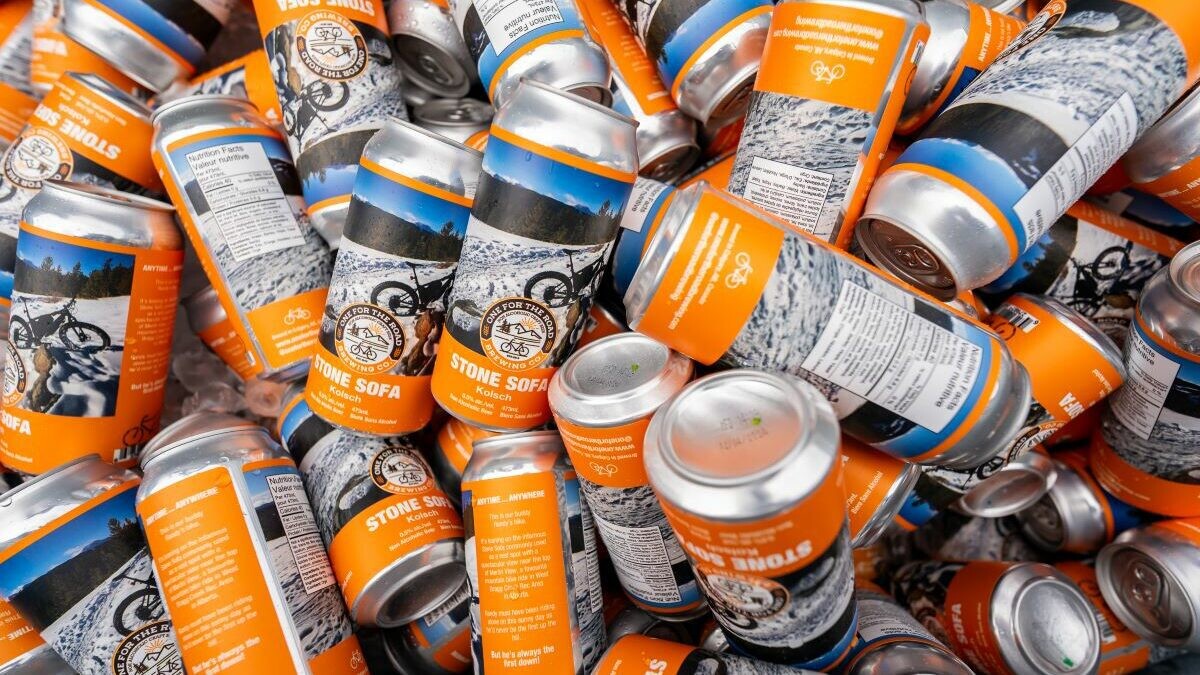
The local non-alcoholic brewery was also a sponsor of the race’s inaugural 60K distance, which was extended from the usual 50K to celebrate the 60th anniversary of the Calgary Marathon.
This year’s race saw the second-largest field in event history, with just over 13,600 participants taking part in one of the six race weekend festivities. In the half-marathon, Calgary’s Blaine Penny and his team of 11 runners set a new Guinness World Record for the fastest half-marathon as a tethered team, raising over $30,000 for the charity MitoCanada.

The marathon (the weekend’s main event), was won by Great Britain’s Jordan Clay in 2:35:59. According to CTV News Calgary, Clay did not expect to win the race, as this was his first time visiting the city. Calgary’s own Emily James won the women’s race in 2:49:16.
(05/29/2024) ⚡AMPby Marley Dickinson
Scotiabank Calgary Marathon
This is Canada's oldest marathon, Canadians and runners from around the world love this race, consistently voting in the Best Road Race in Alberta. There is a 50k, full-marathon, half-marathon, 10k, 5k family walk/run and kids races. You expect the route to be packed with participants and enthusiastic spectators. ...
more...Bolder Boulder: Conner Mantz surges to second consecutive victory in pro race
Conner Mantz sure knows how to put on a show at Folsom Field.
A year after a dramatic finish to win the Bolder Boulder, he did it again on Monday. Mantz surged past Yemane Haileselassie of Eritrea in the final 250 meters to claim the title in the International Pro Team Challenge for the second year in a row.
Mantz, running for the USA Red team, finished the 10K race in 29 minutes, 12.51 seconds to outlast Haileselassie by just 1.8 seconds.

“I think it’s a big deal for me just because this is such a prestigious race and getting the body to dig that deep is something I’m really trying to work on,” said Mantz, who had a strong final kick to win by only four seconds in 2023. “So this is a race that was good to get the best out of myself.”
Mantz’s USA Red squad finished second in the team standings, behind the USA White team, which was led by third-place finisher Sam Chelanga (29:21.16). This is the first time since 2017 that a USA squad finished atop the team standings.

Biya Simbassa (fifth, 29:37.39) and Reed Fischer of Boulder (eighth, 29:41.97) teamed with Chelanga on the USA White team. Mantz ran with fellow BYU alums Clayton Young (seventh, 29:38.47) and Jared Ward (14th, 32:05.50).
Mantz was at or near the lead throughout the race but had a tough time pulling away.
“I just started out really quick and it felt pretty easy, and I was, like, running fast,” he said. “But then as the race went on I started slowing down and I couldn’t speed up, which was getting a little frustrating because I kept trying to take the lead and kind of break that pack open. Every time I took the lead to push I couldn’t get anybody to break out that pack.”
Heading up the final hill on Folsom Street, Haileselassie took the lead
“I trailed all the way behind the group,” he said. “I tried pushing the uphill.”
As the race went into the downhill into Folsom Field, however, Mantz found a new gear.
“I could hear (Haileselassie) struggling breathing, really hard,” Mantz said. “So I was like, ‘I’m gonna stay as close as I can and try and get him on the inside of the stadium, but by the time he crested going to the left, I made a hard move down that little hill and I could tell he was not landing right. So I was like, ‘OK, maybe I need to go now.’ His form was kind of dying. He didn’t slow down that much, though.”
It was enough of a slowdown, however, for Mantz to take advantage and become the first repeat champion since Allan Kiprono of Kenya in 2012-13. He’s only the fifth male to win back-to-back titles.
“It was good race for me,” Haileselassie said. “He led all the way and I tried to push him. He’s strong. He caught me. He’s good in downhill.”
The final kick wasn’t easy, though.
“I was surprised how hard it hurt,” Mantz said. “I had a good workout on Friday and a good one on Tuesday last week. So I was pretty confident I could kick really hard. When I tried to kick, it didn’t feel as good as I would have thought. I expected to feel a lot better at the end.”
The result felt pretty good, though. Mantz will complete at the Olympics in the marathon later this summer, but it meant a lot to him to win the Bolder Boulder again and to feel the electricity of the Folsom Field crowd.
“It’s a blast,” he said. “The crowd was so loud and it was just fun to be in such a special environment. It’s tough, though, like trying to kick and you’re out of breath. It’s tough to really enjoy the crowd 100% but I enjoyed it as much as I could.”
Although he came up short, Haileselassie was in awe of the environment, as well.
“Amazing,” he said. “I’m so excited to see these people. I was hearing about this yesterday. It’s really nice. I like it. It’s a lot of people. Really amazing.”
(05/28/2024) ⚡AMPBOLDER BOULDER
In 1979 we dreamt of attracting a few hundred of our friends to race though the streets of Boulder, Colorado to celebrate Memorial Day with our families. Fast forward almost 40 years and the Bolder BOULDER has grown to become one of the largest and most highly acclaimed 10K’s in the world. Almost 1.2 million runners, joggers, walkers and spectators...
more...Bolder Boulder: Kenya’s Grace Loibach Nawowuna cruises to win in women’s pro race
Emily Durgin came to the 44th Bolder Boulder on Monday to try to defend her title. She had to tip her cap to Kenya’s Grace Loibach Nawowuna, however.
The 20-year-old Nawowuna got off to a fast start and never let up in winning the women’s title of the International Pro Team Challenge. She finished in 32 minutes, 45.3 seconds — the ninth-fastest time in race history and the best since Mamitu Daska of Ethiopia in 2018 (32:36).
“In this race, if you get to mile four and you’re separated, you’re pretty much home free,” said Durgin, who finished fourth, in 33:34.15. “Once she got to mile four, I kind of knew. I mean, that woman is a 29-minute 10K runner.”

Nawowuna posted a 10K time of 29:47.42 — the 11th-best in history — almost a year ago, on June 3, 2023, in The Netherlands. On Saturday, she was in Eugene, Ore., posting a 10K time of 30:34.86 at the Prefontaine Classic.
Nawowuna didn’t arrive in Boulder until Sunday night. She went to the medical tent immediately after her race and was not available for comment on Monday, but she sent a message with her legs.

She posted the fastest split of the day in the opening mile (4:51) and pulled away quickly. Ethiopia’s Siranesh Yirga was second, in 33:19.60.
“I knew (Nawowuna) was going to be able to go out in 4:40 and it not crush her, whereas all of us going under 5:00 at altitude, it does take a little bit more from us,” Durgin said. “She was honestly like an elite, high level athlete. So yeah, it was fun to at least go head to head with those women.”
Led by Nawowuna, Kenya won the team title for the first time since 2016. She teamed with Sarah Naibei (seventh, 33:53.62) and Daisy Kimeli (ninth, 34:30.96) to score 17 points.
Ethiopia, led by Yirga and fifth-place finisher Mulugojam Birhan (33:48.21), was second in the team standings, with 20 points. The United States team, led by Durgin, was third.
Durgin was only nine seconds off her pace from last year (33:25) but said this year’s race was a tough one, because of the pace set by Nawowuna, Yirga and Mexico’s Anahi Alvarez, who was third (33:25.52).
“It was hard this year,” Durgin said. “It was really windy and (the competitors) spread out really, really early. So, we were all running alone and all had a headwind.
“(Nawowuna) separated herself enough and then (Yirga), she was looking back. I knew she was dying, but we were all dying.
“Every year is a little different.”
Durgin was joined by Sarah Hall (10th, 34:35.19) and Nell Rojas (11th, 35:02.02) on the United States team.
In addition to the USA team, there was a team of University of Colorado alums that placed fourth in the team standings. That group was led by sixth-place finisher Makena Morley, who posted a time of 33:49.64.
Also running for the CU team was Carrie Verdon (eighth, 33:54.69) and Sara Vaughn (15th, 36:32.37).
(05/28/2024) ⚡AMPby The Denver Post
BOLDER BOULDER
In 1979 we dreamt of attracting a few hundred of our friends to race though the streets of Boulder, Colorado to celebrate Memorial Day with our families. Fast forward almost 40 years and the Bolder BOULDER has grown to become one of the largest and most highly acclaimed 10K’s in the world. Almost 1.2 million runners, joggers, walkers and spectators...
more...Kibor and Melaku set to clash at the Stockholm Marathon
Two-time La Rochelle Marathon champion Marion Kibor will go head-to-head with Stockholm Marathon defending champion Sifan Melaku this Saturday (June 1) in a thrilling showdown in Sweden's capital.
Melaku claimed the title last year after clocking 2:30:44 in a race where she led an Ethiopian podium sweep. Compatriots Amente Sorome (2:33:31) and Yenenesh Dinkesa (2:35:44) placed second and third
Kibor boasts a personal best (PB) of 2:22:35 set during last year’s Haspa Marathon, where she placed fifth.

The 30-year-old first seized the La Rochelle title in 2019 with a time of 2:29:51 and reclaimed it in 2022 with an impressive 2:25:15.
Her accolades also include a bronze in the Paris Half Marathon (1:06:46) and a silver at the 2022 Geneva Marathon (2:28:30).

Joining Kibor is Flomena Chepkiach, the Tunis Marathon champion, Lina Jepkemoi, the Linz Marathon silver medalist and Sarah Kiptoo, the 2014 Cleveland Marathon champion.
Melaku will be flanked by her formidable Ethiopian teammates, last year’s runner-up Sorome and 2019 Leiden Marathon champion Zenebu Bihonegn.
In the men’s race, Fredrick Kibii, the 2023 Hannover Marathon bronze medalist, will lead the Kenyan charge. Kibii has a PB of 2:08:09 set in Hannover.
He will be supported by Robert Ngeno, Buenos Aires Marathon bronze medalist, who placed fourth at last year's Stockholm Marathon with a time of 2:13:52.
Also in the mix is Bernard Kipkorir, the 2020 Houston Half Marathon silver medalist. He has a PB of 2:07:18 from the 2021 Valencia Marathon where he finished in position 15.
Kipkorir has an impressive record in the half marathon including a title in the 2019 Istanbul Half Marathon (59:56) as well as silver medals during the 2019 Valencia (59:07) and Copenhagen (59:16) Half Marathons.
Rounding out the Kenyan squad are Kennedy Kipyeko, the La Rochelle Marathon champion with a PB of 2:10:49 and Abednego Cheruiyot, the 2022 Azpeitia Half Marathon bronze medalist.
Morocco’s Mohamed El Talhaoui will pose a significant challenge for the Kenyans. El Talhaoui, who has a PB of 2:08:03 from the Seville Marathon, is expected to be a strong contender.
(05/28/2024) ⚡AMPby Teddy Mulei
ADIDAS Stockholm Marathon
ASICS Stockholm Marathon is an exciting race in a beautiful city with runners from all over the world. This is one of the major sporting events in Sweden with hundreds of thousands of spectators along the route cheering the participants. The race takes you through Stockholm, one of the world’s most beautiful capitals. Built on 14 islands around one of...
more...Former Geneva marathon champion slapped with 7-year doping-ban for repeat offense
The Kenyan road runner was nabbed with prohibited substances in her system and will pay dearly for her second infraction.
The Athletics Integrity Unit has slapped Josephine Chepkoech with a seven-year ban for the the Presence/Use of a Prohibited Substance (Testosterone) from May 7, 2024.

Chepkoech’s results from February 18 this year have also been disqualified. The 2019 Geneva Marathon champion was provisionally suspended by the AIU on May 9, 2024, being served with a Notice of Allegation for violating Article 2.1 and Article 2.2 of its anti-doping regulations.
The AIU explained that on February 18, Chepkoech provided a urine sample during her competition at the Seville Marathon where she finished second in the race and after her urine was tested, it was found to have substances banned by the World Athletics Anti-doping Agency.

It was further noted that the athlete was not exempted from the use of the substance, popularly known as the Therapeutic Use Exemption (TUE).
The athlete accepted the ruling but this was the second time she had found herself on the wrong side of the law, having violated the anti-doping rules. She had previously served a period of ineligibility for two years from 2015 to 2017.
The athlete was required to serve a ban of eight years but after she accepted the ruling and responded in good time, she will serve the ban for seven years.
Meanwhile, Chepkoech made her marathon debut in 2018 at the Nairobi Marathon, dominating the women's race and winning in a time of 2:33:11. Last season, she competed in the Chengdu Marathon and ended up finishing fifth.
She has enjoyed a great marathon running career after her debut, where she finished second in both the 2019 Sydney Marathon and Zurich Marathon. In 2020, she finished fourth in the Zurich Marathon before her two marathons in 2023 and 2024.
(05/28/2024) ⚡AMPby Abigael Wuafula
Scottish runner, Josh Kerr aiming for Paris Olympics gold after shattering 39-year record
It is nearly a decade since Josh Kerr made the decision to turn his back on home comforts and fly thousands of miles across the Atlantic to begin a new life courtesy of an athletics scholarship at the University of New Mexico.
He was only a teenager at the time and left behind a close-knit family in Edinburgh, But never at any point did he have any doubts about the sacrifices involved in upping sticks to Albuquerque, or the ultimate goal.
“It was a big leap of faith, to be honest,” he recalled last year. “I hadn't taken a visit. But if you're not pushing your boundaries, you're just going to get a little bit stale. They said they had 307 days of sun, so I was there.”

Still only 26, the Scot’s boundaries have shifted considerably since then. He is increasingly regarded as one of Scotland’s top medal prospects for the coming Paris Olympics, a status consolidated by his remarkable victory in the Diamond League, where he triumphed over Olympic champion Jakob Ingebrigtsen and smashed Steve Cram’s near 40-year-old British mile record.
In a quirk of fate, Cram, one of the leading lights in the golden era of British middle-distance running, was part of the BBC commentary team for the meet. “Josh Kerr is getting better and better and better, that was phenomenal, and you know this is a man full of confidence heading to the Olympic Games,” he said.

Kerr’s victory represents the latest step in his journey to the summit of his sport. He first came to national prominence thanks to his 1,500m bronze medal at the Tokyo Olympics. And in August last year, he shocked Ingebrigtsen to win the 1,500m title at the World Athletics Championships in Budapest, before breaking the indoor two-mile world record in February.
Such victories are the highlights of a running career that began when Kerr joined Edinburgh Athletics Club aged eight. At the time, his older brother, Jake, was pursuing a successful track career, but later followed in the footsteps of their father, John, by taking up rugby. The younger Kerr stayed on the track, honing his skills under the tutelage of coaches Eric Fisher and Davy Campbell before heading stateside. He is now based in Seattle, part of the Brooks Beasts team trained by Danny Mackey.
But Kerr has always credited the crucial role played by Edinburgh Athletics Club, regularly returning to help give advice to its next crop of youngsters. “Those from the club that have reached the big stages before me have shown that it can be done, and in turn we can show it to the next generation,” he previously explained.
His rapid rise in world athletics represents the latest glowing endorsement of Edinburgh’s coaching. Indeed, Kerr, used to race alongside Jake Wightman, a 1,500m gold medallist at the 2022 World Championships.
Both men were trained by Fisher, now 77. In the wake of Kerr’s gold win in Budapest, he gave an insight into how, during Kerr’s early years, he could give too much respect to his brother, and lacked the confidence to see himself as being at the same level as top athletes. “Things have changed now,” he added.
(05/27/2024) ⚡AMPby Martyn McLaughlin
Paris 2024 Olympic Games
For this historic event, the City of Light is thinking big! Visitors will be able to watch events at top sporting venues in Paris and the Paris region, as well as at emblematic monuments in the capital visited by several millions of tourists each year. The promise of exceptional moments to experience in an exceptional setting! A great way to...
more...Cheptai to compete in two 10k races in United States
Former world cross country champion Irine Cheptai will compete in two 10km road races in the United States in preparation for her second career marathon.
The reigning Commonwealth Games 10,000m silver medalist, who last month won the Hamburg Marathon in her 42km debut, said she will be competing at the Boston 10km on June 23 as well as the Peachtree 10km race on July 4.
“I want to use the two races as part of my preparations for the next marathon,” said Cheptai.

The former track queen said she has to work on her speed because the tempo in the 10km race is different.
“Right now, I am training for the 10k, which has a different program unlike in marathons,’” she said. She said her victory on her marathon debut took her by surprise.

" It was like a miracle beating bigwigs in the marathon after switching from track and cross country to marathon," she noted.
Chepati said: “I want to build up on my victory in Hamburg and win more major races,” said Cheptai.
The 2008 world junior cross country silver medalist won the Hamburg in her personal best time of 2:18.21 ahead of compatriot Winfridah Moset (2:18.24) and Ethiopian Gotytom Gebreslase (2:21.18).
“After competing on track and cross country, I feel I am ripe for the marathon,” said Cheptai.
(05/27/2024) ⚡AMPby Emmanuel Sabuni
B.A.A. 10K
The 6.2-mile course is a scenic tour through Boston's Back Bay. Notable neighborhoods and attractions include the legendary Bull and Finch Pub, after which the television series "Cheers" was developed, the campus of Boston University, and trendy Kenmore Square. ...
more...Ben Flanagan breaks his national record at Canadian 10K
It wasn’t obvious from the start that he was going for the Canadian record, but Ben Flanagan made a move halfway into the Canadian 10K Championships at Tamarack Ottawa Race Weekend (also known as the Ottawa 10K, putting distance between himself, marathoner Rory Linkletter and Jeremy Coughler, and held on for the win, squeaking past his Canadian record by two seconds, to finish in 28:09. (The previous record, held jointly with Canadian marathon record holder Cam Levins, was 28:11.)
“I wanted to stay on the gas and in that final kilometre I gave it everything I had,” Flanagan told Canadian Running post-race. His final kilometre was a split of two minutes and 38 seconds. Linkletter finished second in Ottawa, in 28:40 (a new personal best) and Coughler third, in 28:55 (also a personal best).

It was overcast and about 18 C in Ottawa Saturday–slightly warmer than ideal for racing, but less hot than it has been in recent years, which was a relief for the runners and made fast times possible. The race began with a fairly sedate 2:57 split, but got progressively faster (the third-kilometre split was 2:45). Flanagan took advantage of the hard downhill turn where the race crosses the canal, to make his move. It was a $6,000 payday for Flanagan, who will get $5,000 for the win and an additional $1,000 bonus for the national record.
Linkletter will be disappointed not to take the national championship, something he has yet to accomplish in his career; he is Canadian, but lives and trains in Flagstaff, Arizona, under former American marathoner Ryan Hall. Linkletter has been named to the Canadian marathon team for the Paris Olympics, along with Levins. Flanagan is also qualified for the Olympics (in the 5,000m), but has not yet been officially selected.

Coughler won his third consecutive Spring Run-Off 8K in Toronto’s High Park in April; in 2023, he won the Canadian 10,000m Championships.
For Flanagan and Linkletter, Saturday’s race was almost a repeat of the 2022 event, which Flanagan also won (in 28:40), with Linkletter finishing second.
(05/27/2024) ⚡AMPby Anne Francis
Ottawa 10K
Ottawa's course is fast, scenic and few elevation changes. Considered to be an excellent course for first timers and should provide an environment conducive to setting a PR. The Ottawa 10K is the only IAAF Gold Label 10K event in Canada and one of only four IAAF Gold Label 10Ks in the world. The Ottawa 10K attracts one of the...
more...Okpekpe 10km Race: Kenyans Dominate Race
Though no new record was set at the 10th Okpekpe International 10km Road Race on Saturday, but expectedly Kenyan Men and women dominated the race that was held in Okpekpe town, near Auchi in Edo state.
In the men, Kenyan Pingua Zak ayo Edward returned a time of 29.31 minutes to win the top price of $15,000, while his compatriot, Isaac Kimpemboi placed second in 29.36 minutes and won $8,000. Alex Olotiptip placed third in 29.37 minutes to cart home $5,000.

The women event was dominated by the Kenyans. Gladys Kwanbuka blaize the trail in 33.05 minutes with Regina Wambui second in 33.38 minutes, while Sheila Cherotick placed third in 34.27 minutes.
The women won the same price money as their male counterparts.

In the Nigerian category, Francis James Musa won in 30.46 minutes and won half a million Naira as price money with Israel Sadjo, the defending champion, placing second in 31.51 minutes and won N300,000. Dung Elijah Emmanuel was third in 32.20 minutes to cart home N200,000.
The Nigerian women were led by Patience Daylop Mwavwang, who successfully defended her title in 37.07 minutes. Yilmunen Nicholas Gokun placed second in 37.23 minutes while Blessing Shambo Solomon placed third in 37.28 minutes.
(05/27/2024) ⚡AMPOkpekpe Road Race 10km
The Okpekpe Road Race invites world-class runners from around the world in a tradition tointermix local recreational and up and coming runnerswith the best of the best. Invitation extended to all CAA Member Federations, all military and para-military have sent in entries. Okpekpe is more than just a collection of fertilefarmlands or a window into the past, it is a...
more...A Guy Just Broke the World Record for a Marathon in Crocs
This may come as a shock, but until now, no one has ever run a sub-3-hour marathon while wearing Crocs.
Those days are now over.

In his most recent video, YouTuber Chris Howett showed off his latest feat—running the Manchester Marathon with a sub-3 hour time of 2:58:24 … while wearing Crocs. The previous record stood at 3:02.
Not only that, but Howett had previously never run a marathon before in Crocs or any other footwear.
Sporting a yellow pair of the comfortable footwear adored by chefs and Gen Z alike, and complete with a Lightning McQueen charm for good luck, Howett set off on his run, but not before getting eyed up by his fellow runners, some of whom were wearing the latest and greatest racing shoes for the event.
“I mean, who would be stupid enough to try to run a marathon in Crocs?” Howett asked the camera. “That person would be me.” At least he remembered to use the heel strap.
While Howett had never run a marathon, he was a track athlete before injuries, including multiple Achilles tears, derailed his career. Still, he felt he could run a fast enough marathon in the chunky, brightly-colored shoes.
As the marathon continued, Howett worried that it seemed too easy, logging a 6:50 pace on his first mile, a 6:47 for the second, and 6:36 for mile three. After those first few miles, however, his feet began to fight back against being forced to run in the rubber clogs.
“I was running 30 seconds per mile faster than I needed to, this was just outright stupid,” Howett narrated in the video. “The wheels could fall off at any minute.”
As the race went on, Howett continued to fear he would hit “the wall.” At the halfway point in the race, the runner said that while he felt good, his feet were another story. “It’s like I’m being stabbed in the bottom of the foot. Tough going.”
Howett said that he developed a blister on his left foot that made running in the Crocs unbearable but that the crowd support kept him going. “My left foot is going through pain I didn’t even know existed on the pain spectrum.”
As he neared the finish line, disaster struck. “I was dealing with a cramp for the last six miles, but this I could not continue running,” Howett said, noting that his cramping had gotten too bad to ignore. He was just half a mile from the finish.
Again, he says the crowd lifted him up and helped him continue. “I wasn’t just breaking the world record for myself anymore, I was breaking it for the people,” Howett quipped before finishing.
And finish he did. Howett ended his Croc challenge with a time of 2:58:24. The Guinness World Record team is still verifying the time, but when it is, Howett will have beaten the record by four minutes and 17 seconds.
(05/26/2024) ⚡AMP

